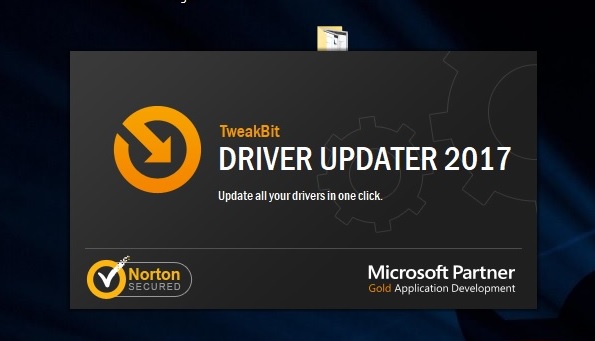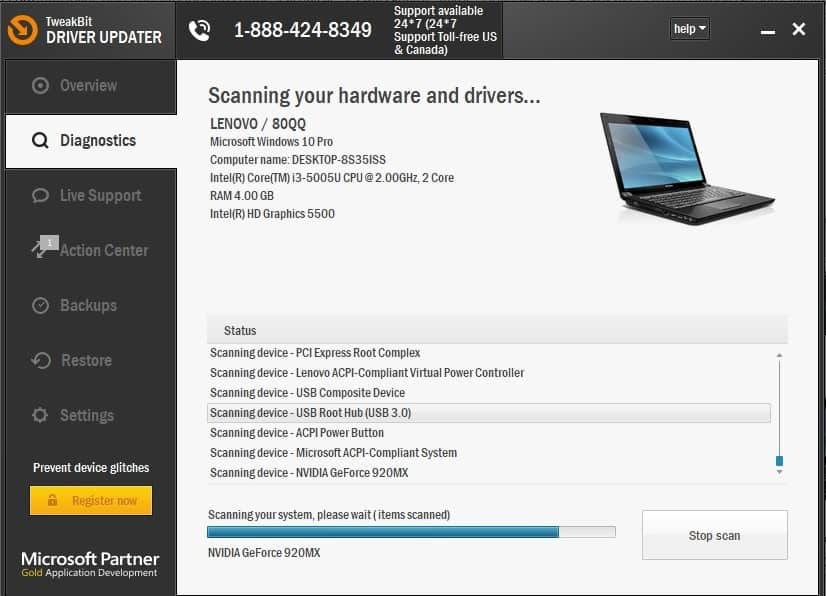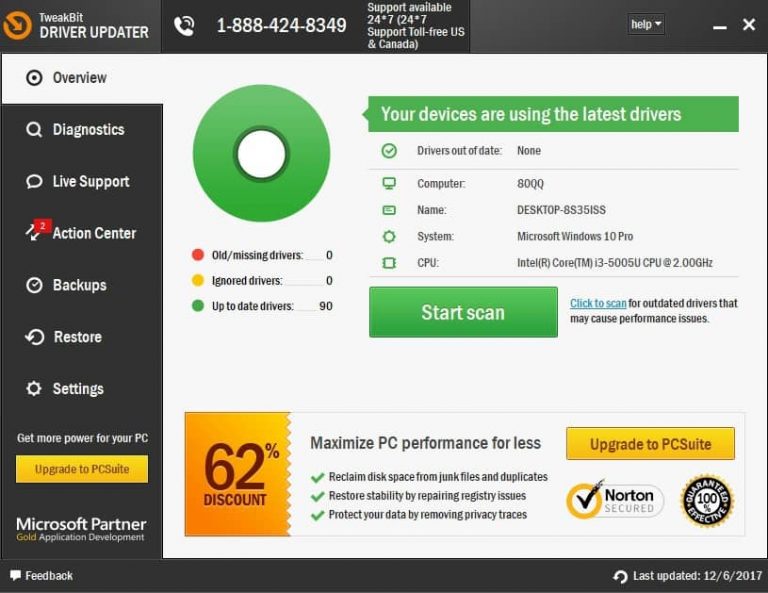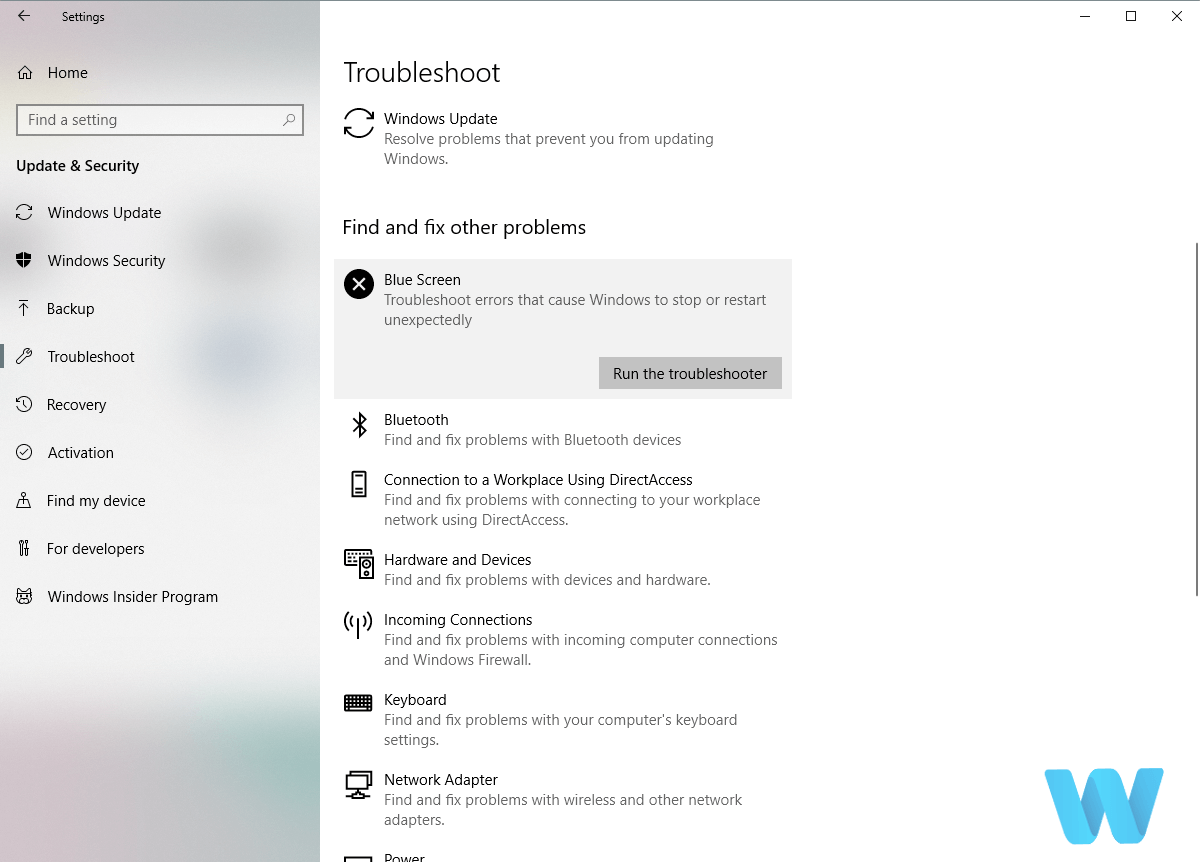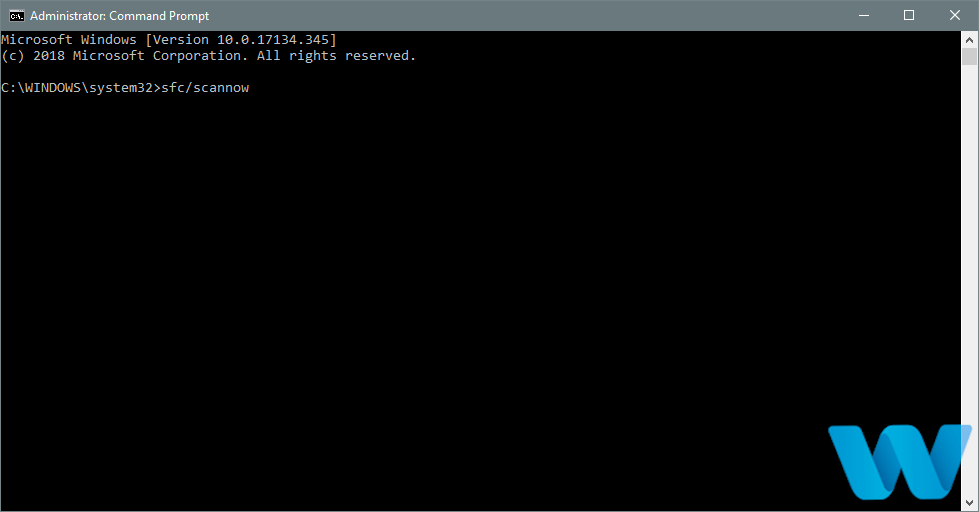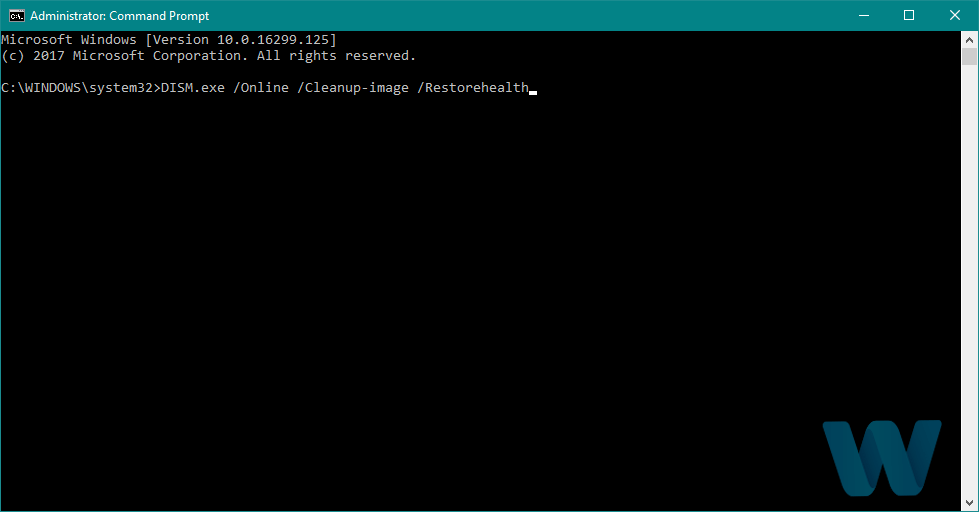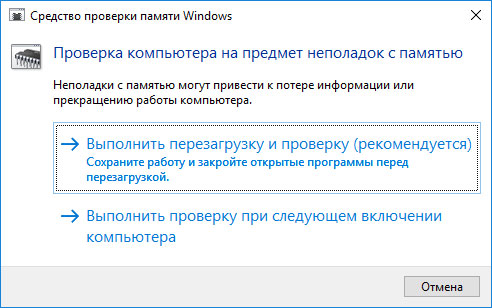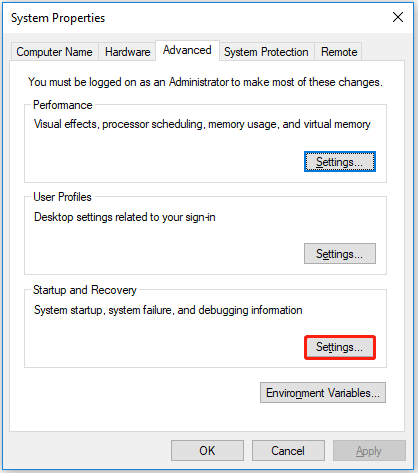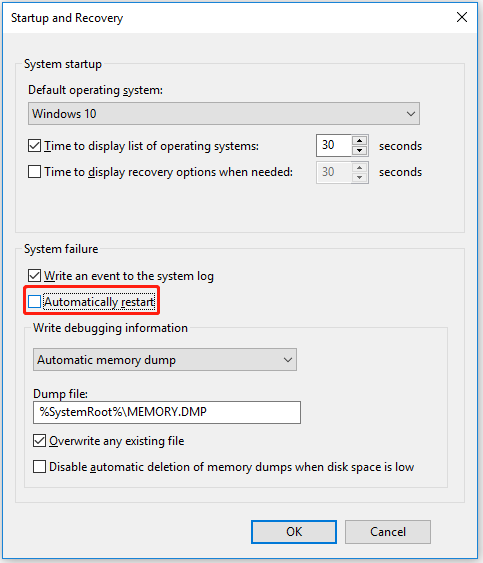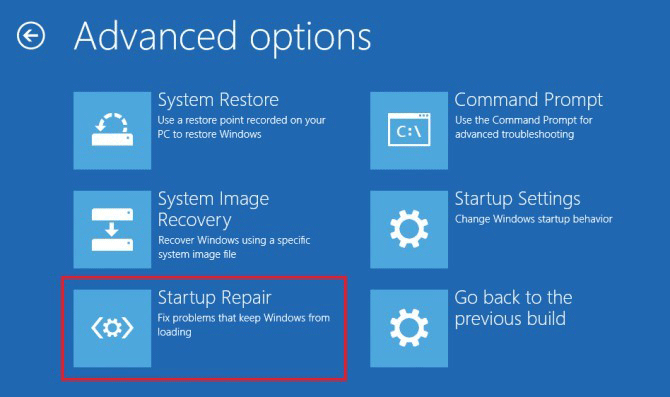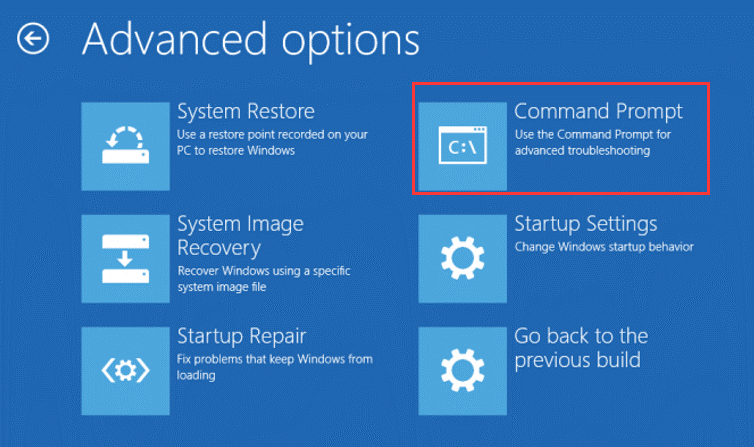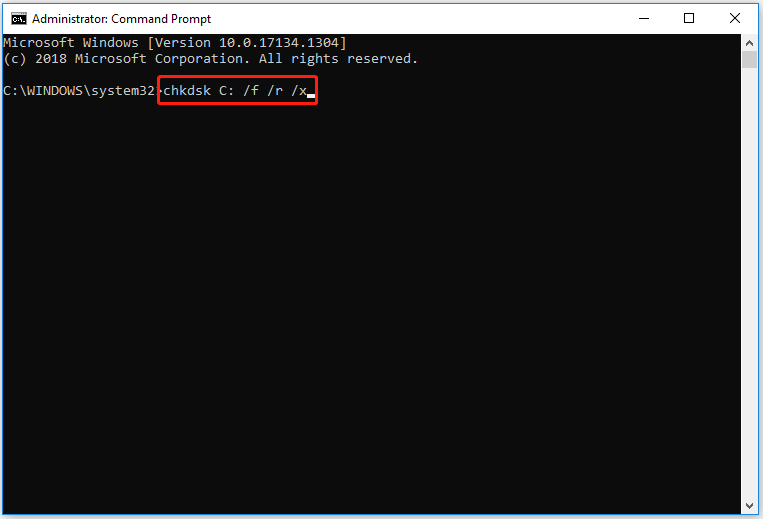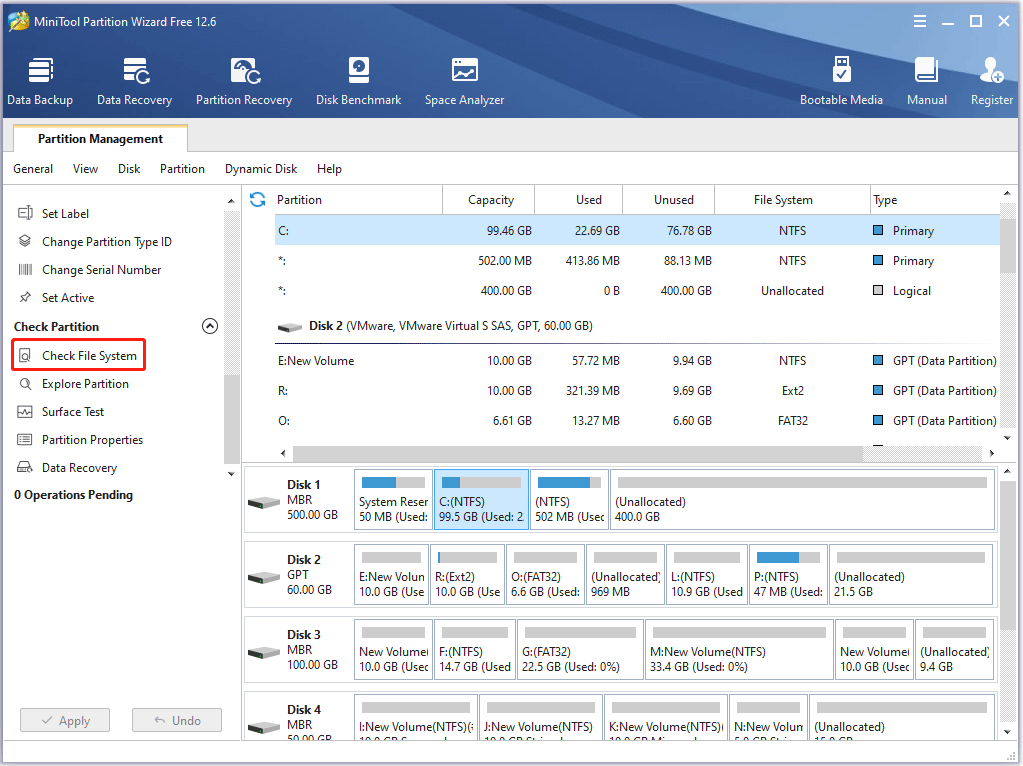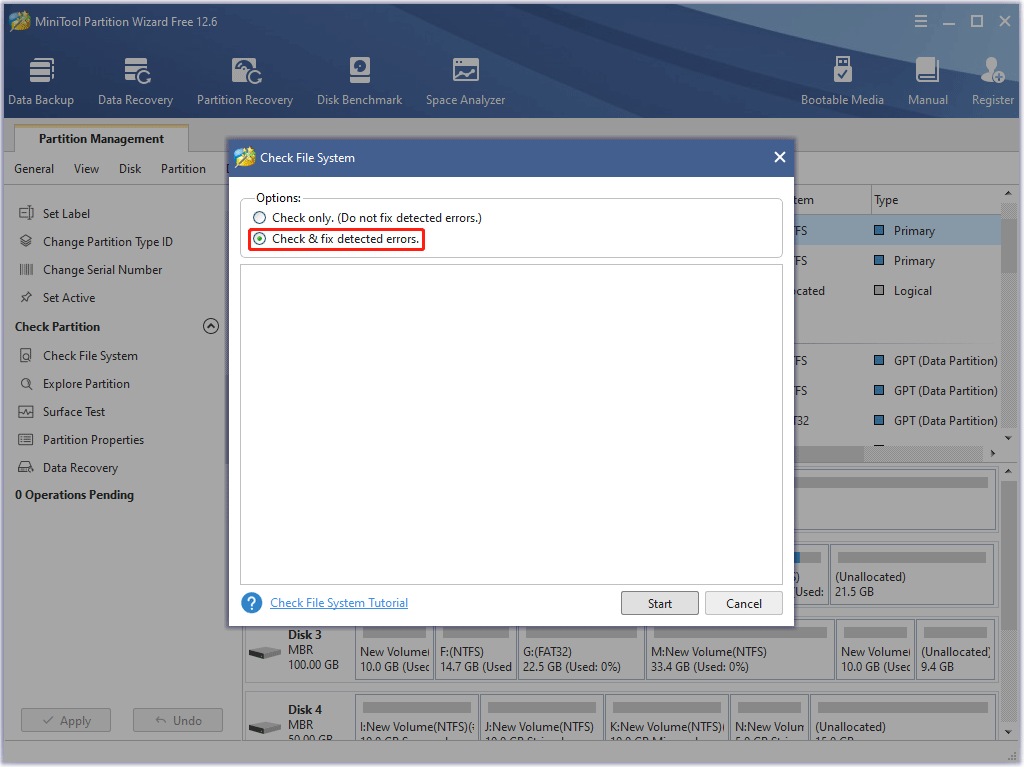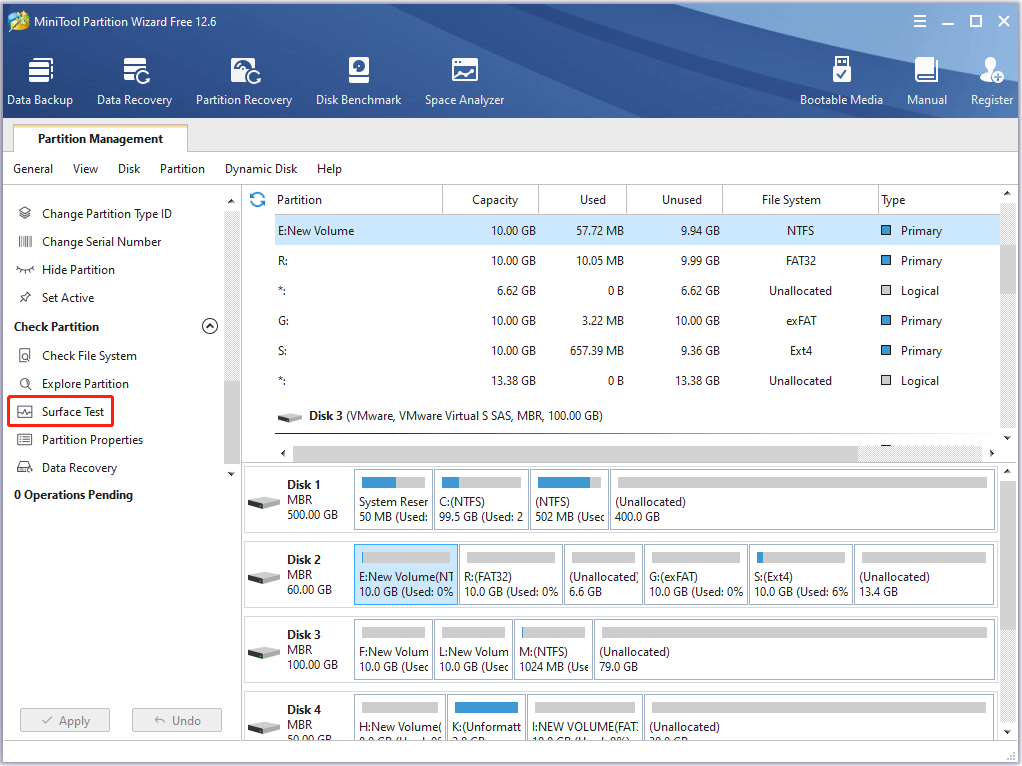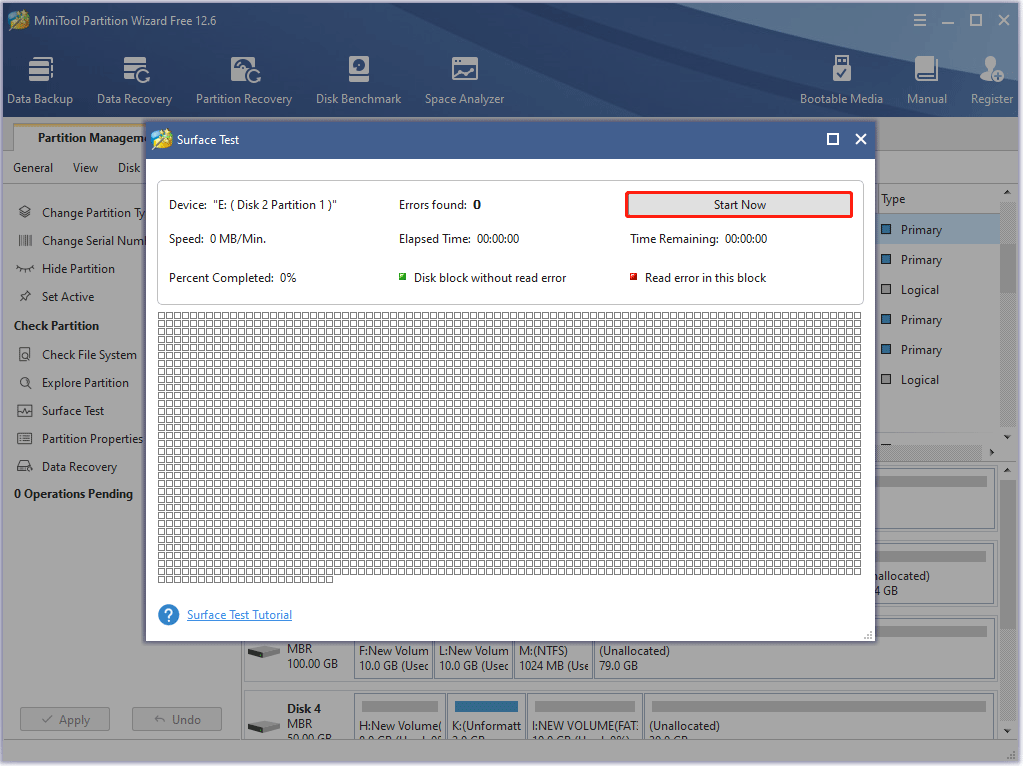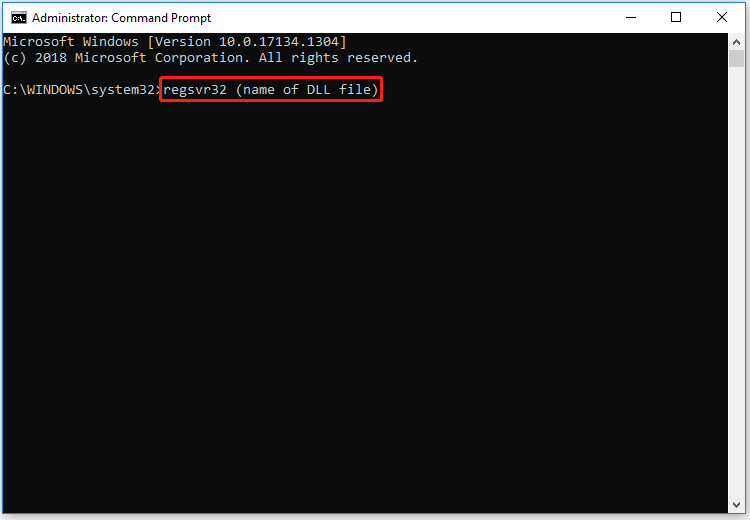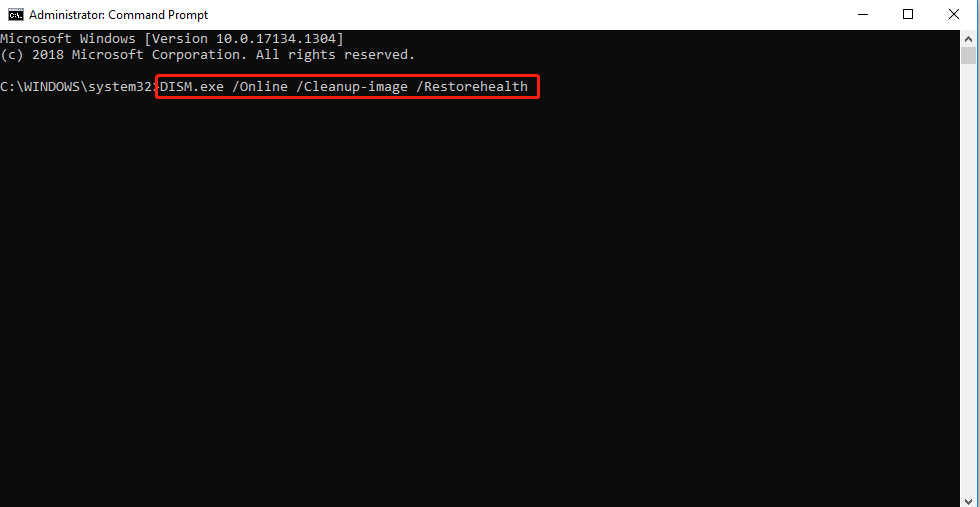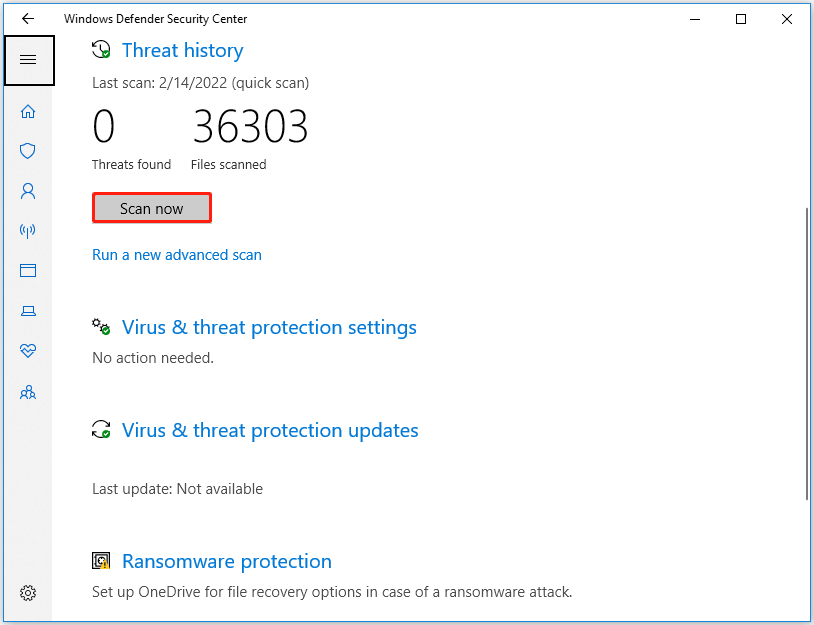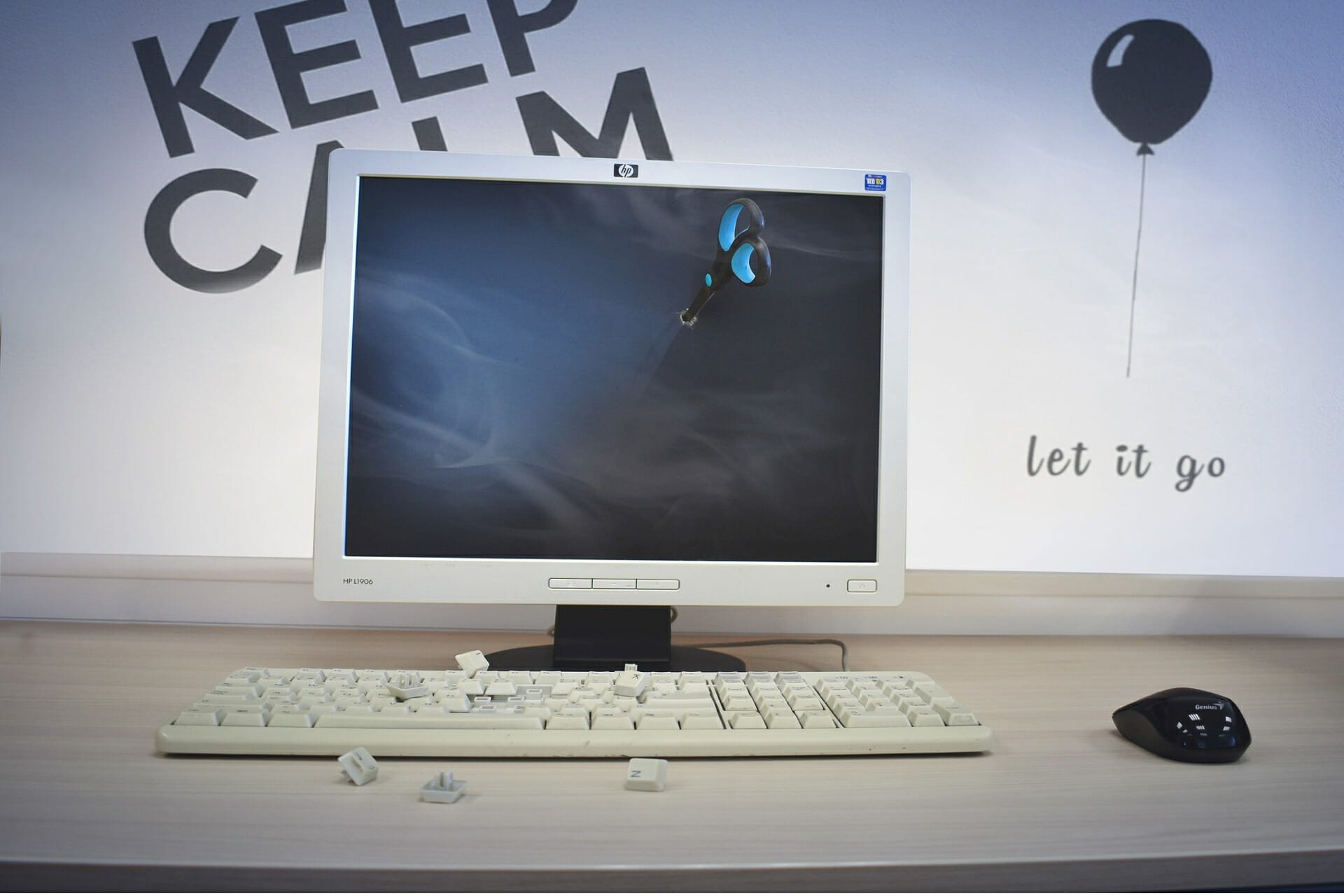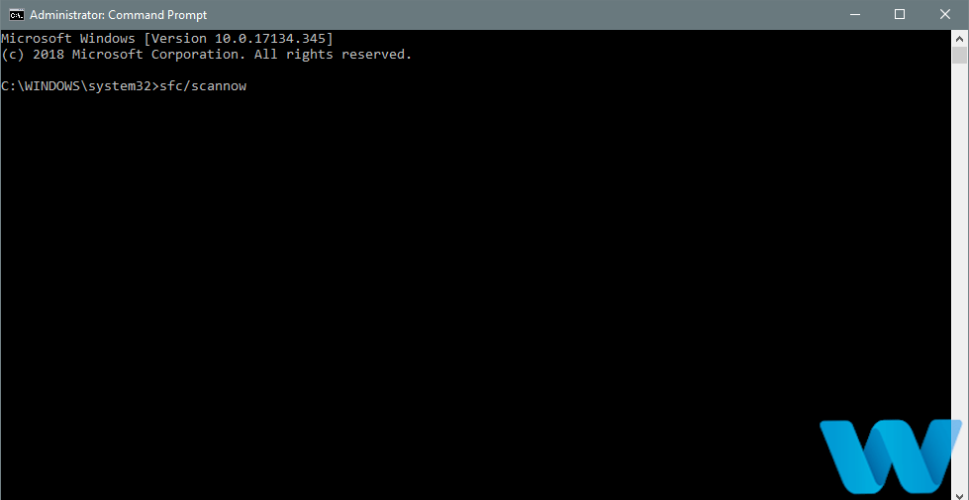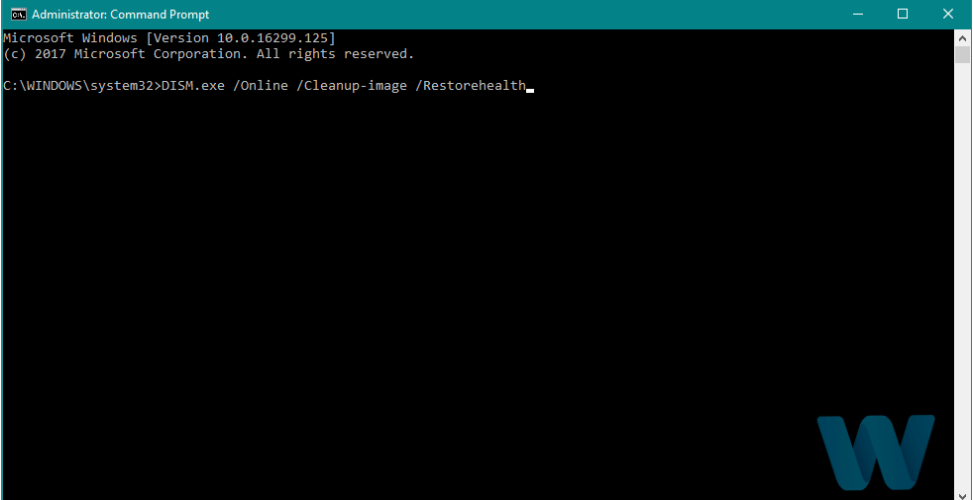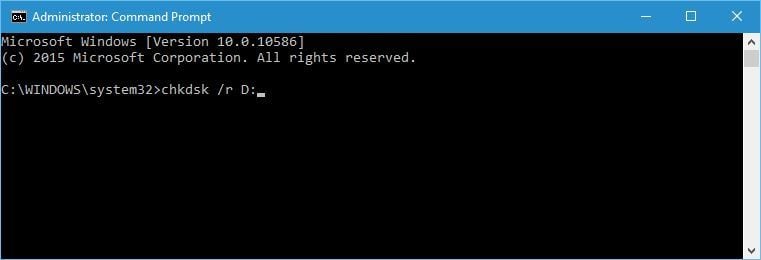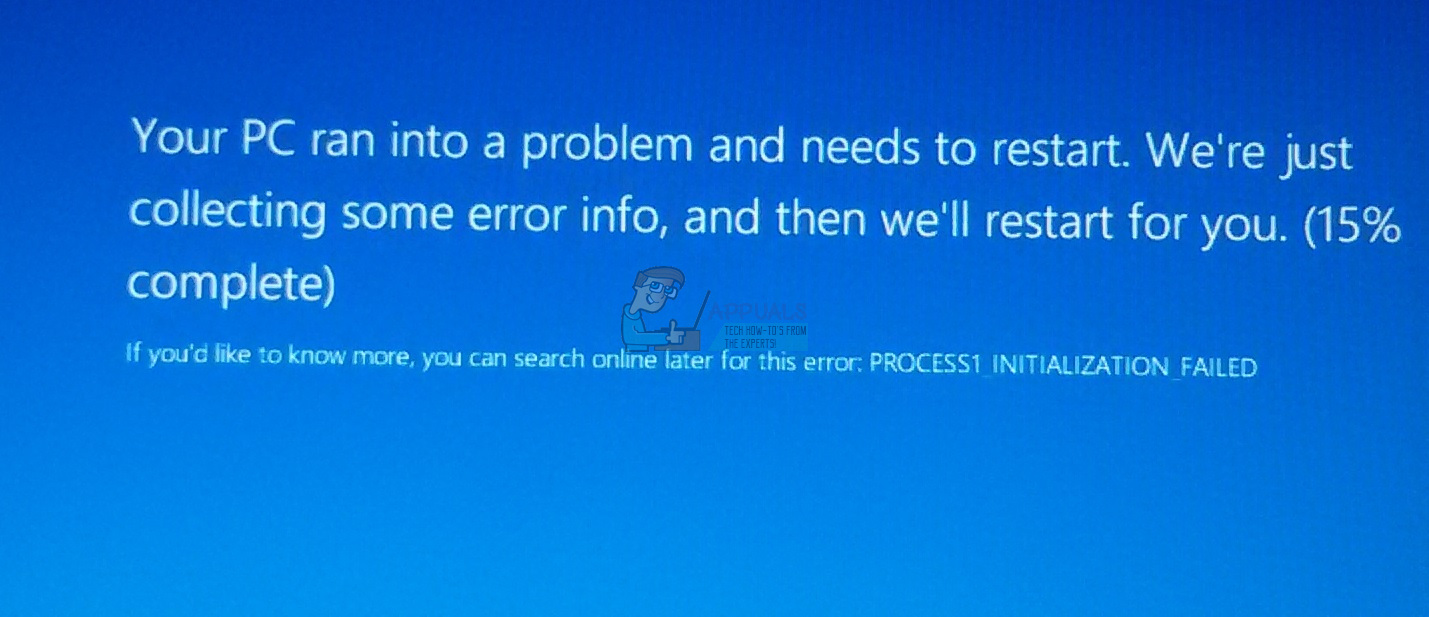В данной статье мы с вами будем рассматривать синий экран смерти, который именуется PROCESS1_INITIALIZATION_FAILED и имеет номер 0x0000006B. Что сами Майкрософт говорят по поводу этой проблемы? Они говорят вот что: «Данная проблема появляется вследствие повреждения файла Bootcat.cache или же из-за изменения размера этого файла». Из этого мы точно можем утверждать, что проблема заключается в файле Bootcat.cache. Также нельзя исключать таких вещей, как повреждения системных файлов, аппаратных компонентов, кабелей или прочее. Синий экран смерти PROCESS1_INITIALIZATION_FAILED может проявлять себя на большинстве версий операционной системы Windows.
В сообщении этого критического сбоя присутствует следующая информация:
STOP: 0x0000006B (Параметр1, Параметр2, Параметр3, Параметр4)
PROCESS1_INITIALIZATION_FAILED
Заметка: эти четыре параметра могут меняться в зависимости от конфигурации компьютера пользователя.
Помимо прочего, этот синий экран смерти можно увидеть даже на клиентах, серверных машинах и смартфонах. В данной статье мы опишем целых 8 методов, которые помогут разрешить вам эту непростую ситуацию.
Содержание
- Решаем сбой PROCESS1_INITIALIZATION_FAILED
- Метод №1 Удаление файла Bootcat.cache
- Метод №2 Копирование Bootcat.cache с другого компьютера
- Метод №3 Удаление файла COMPONENTS
- Метод No4 Установка Windows 7 SP1
- Метод No5 Удаление Roxio GoBack
- Метод №6 Восстановление Windows с помощью утилиты DISM
- Метод №7 Исключить папку от сканирований
- Метод №8 Использование утилиты CHKDSK
Решаем сбой PROCESS1_INITIALIZATION_FAILED
Метод №1 Удаление файла Bootcat.cache
Следуя из сообщения Майкрософт, первым вашим шагом станет удаление файла Bootcat.cache из папки CodeIntegrity. Данный файл располагается в директории C:WindowsSystem32Codeintegrity. Вам понадобится загрузить компьютер через диск восстановления системы Windows. Если вы не знаете, как создать этот диск, то пройдите по этой ссылке на сайт Майкрософт, где написаны точные инструкции по его созданию. Создав этот диск, сделайте следующее:
- Вставьте диск или же флеш-носитель в свой компьютер.
- Перезапустите компьютер.
- Загрузите систему через диск восстановления Windows.
- Выберите предпочитаемый язык и другие параметры, а затем нажмите «Далее» для продолжения.
- Кликните на кнопку «Восстановление системы».
- Далее пройдите путем «Диагностика→Дополнительные параметры→Командная строка»
- Выберите пункт «Командная строка».
- Впишите в нее команду diskpart.
- Впишите list volume и нажмите Enter.
- Запомните в каком разделе находится ваша ОС, затем впишите Exit и нажмите Enter.
- Впишите C:(укажите тот раздел, в котором находится ваша ОС) и нажмите Enter.
- Впишите cd windowssystem32codeintegrity и нажмите Enter.
- Впишите del bootcat.cache и нажмите Enter.
- Закройте Командную строку.
- Перезагрузите свой компьютер, а затем попытайтесь зайти в систему обычным путем.
Метод №2 Копирование Bootcat.cache с другого компьютера
Если первый метод вам не помог в решении проблемы с синим экраном смерти PROCESS1_INITIALIZATION_FAILED, то вы должны попробовать этот метод, который включает в себя копирование файла Bootcat.cache с другого компьютера, подразумевая, что тот работает там корректно. Также как и в предыдущем методе, вам снова придется загрузить свою систему через диск восстановления.
- Найдите другой компьютер и зайдите в его операционную систему.
- Вставьте в флеш-устройство в компьютер.
- Нажмите Windows+E чтобы открыть Проводник Windows.
- Пройдите в директорию C:WindowsSystem32Codeintegrity.
- Копируйте файл Bootcat.cache к себе на флеш-устройство.
- Вставьте флеш-хранилище в компьютер, у которого проблемы с синим экраном смерти PROCESS1_INITIALIZATION_FAILED.
- Запустите проблемный компьютер через диск восстановления Windows и доберитесь до Командной строки, как это было показано в предыдущем методе.
- Открыв Командную строку, впишите в нее команду diskpart.
- Впишите list volume и нажмите Enter.
- Запомните в каком разделе находится ваша ОС, затем впишите Exit и нажмите Enter.
- Впишите C:(укажите тот раздел, в котором находится ваша ОС) и нажмите Enter.
- Впишите cd windowssystem32codeintegrity и нажмите Enter.
- Впишите copy E:bootcat.cache(впишите ту букву, под которой выступает ваше флеш-хранилище) и нажмите Enter.
- Закройте Командную строку.
- Перезагрузите свой компьютер.
Метод №3 Удаление файла COMPONENTS
Итак, если ничего из вышеперечисленного не помогло, а такое вполне возможно, то давайте двигаться дальше. На этот раз мы с вами попробуем сделать кое-что другое – удаление файла COMPONENTS из директории windowssystem32config. Данное действие также зарекомендовало себя отличным способом по борьбе с синим экраном смерти PROCESS1_INITIALIZATION_FAILED.
- Снова запустите свою ОС через диск восстановления.
- Пройдите весь путь до Командной строки, как это было уже показано в предыдущих методах.
- Впишите команду diskpart и нажмите Enter.
- Впишите list volume и нажмите Enter.
- Впишите Exit и нажмите Enter.
- Впишите cd windowssystem32config и нажмите Enter.
- Впишите del components и нажмите Enter.
- Закройте Командную строку.
- Перезагрузите свой компьютер.
Ну что, ваша система все еще загружается с синим экраном смерти PROCESS1_INITIALIZATION_FAILED? Ок, тогда давайте двигаться далее.
Метод No4 Установка Windows 7 SP1
Если вы используете Windows 7 без SP1, то вам нужно попробовать установить этот сервисный пакет для вашей операционной системы. Все что вам нужно сделать, так это пройти в Центр загрузок Майкрософт и скачать от туда необходимый сервисный пакет. Однако, будьте внимательно, что именно вы скачивайте. Обязательно отталкивайтесь от того, какой разрядностью обладает ваша система, т.е. 32-битная или 64-битная. Загрузите Windows 7 SP1, установите его и перезагрузите систему. Затем проверьте, появляется ли синий экран смерти PROCESS1_INITIALIZATION_FAILED.
Метод No5 Удаление Roxio GoBack
Если вы используете программное обеспечение Roxio GoBack, то вам нужно попробовать удалить его, чтобы проверить, не вызывает ли ли оно уже оговоренный синий экран смерти. Удаляется Roxio GoBack довольно просто через Программы и компоненты.
- Нажмите на клавиатуре Windows+R.
- Впишите appwiz.cpl и нажмите Enter.
- Выберите Roxio GoBack и удалите ее.
- Перезагрузите компьютер.
- Протестируйте систему на стабильность.
Возможно, что именно эта утилита и стояла за таким серьезным сбоем в системе, как PROCESS1_INITIALIZATION_FAILED. Однако, если ничего не изменилось, то давайте двигаться дальше по нашему списку методов.
Метод №6 Восстановление Windows с помощью утилиты DISM
Для выполнения этого метода, нам потребуется использовать утилиту под названием DISM. DISM – это команда, которая позволяет вам монтировать образ Windows(install.wim) и выполнять такие действия, как установку, удаление, настройку и обновление операционной системы. DISM является компонентом комплекта средств для развертывания и оценки Windows(Windows ADK), который можно загрузить по этой ссылке. Итак, чтобы восстановить Windows с помощью утилиты DISM, вам потребуется сделать следующее:
- Для начала загрузите Windows ADK, а затем установите DISM.
- Нажмите на Пуск и впишите в поисковик запрос «Система обслуживания образов развертывания и управления ими».
- Нажмите на найденный результат ПКМ и выберите Запустить от Администратора.
- Впишите в нее DISM /image:D: /cleanup-image /revertpendingactions и нажмите Enter.
- После выполнения команды, перезагрузите свой компьютер, а затем протестируйте систему на наличие синего экрана смерти PROCESS1_INITIALIZATION_FAILED.
Метод №7 Исключить папку от сканирований
Антивирусное программное обеспечение также может стоять у истоков проблемы с появлением оговоренного синего экрана смерти. Чтобы исправить это, вам нужно исключить папки CodeIntegrity и catroot от сканирования антивирусом. Сейчас мы покажем вам как это делать на примере Защитника Windows. Если вы используете иной антивирус, то это не беда, так как там, скорее всего, будут применимы эти шаги.
- Кликните на Пуск и впишите в поисковик запрос «Защитник Windows».
- Нажмите на найденный результат ПКМ и выберите «Запустить от имени Администратора».
- Перейдите во вкладку «Параметры».
- Кликните на «Добавить исключение».
- Кликните на «Исключить папку».
- Пройдите в директорию C:WindowsSystem32CodeIntegrity.
- Кликните «Исключить эту папку».
- Кликните на «Исключить папку» еще один раз.
- Пройдите в директорию C:WindowsSystem32catroot.
- Кликните «Исключить эту папку».
- Еще раз хорошенько проверьте, исключили ли вы нужные вам папки.
Возможно, синий экран смерти PROCESS1_INITIALIZATION_FAILED появлялся в случае сканирования этих папок. По крайней мере, так утверждают некоторые пользователи в Интернете. Ну что, проблема все еще преследует вас?
Метод №8 Использование утилиты CHKDSK
Когда ваш жесткий диск не работает как надо, то на нем могут появиться поврежденные данные или же плохие сектора. В этом случае вам поможет довольно неплохая системная утилита CHKDSK, которая поможет найти вам бэдблоки и исправить их, но только если это будет возможно.
- Нажмите ПКМ на Пуск и выберите «Командная строка(администратор)».
- Впишите chkdsk /r и нажмите Enter.
- Далее напишите Y и нажмите Enter, чтобы принять перезагрузку компьютера.
- Подождите, пока утилита завершит починку файловой системы на компьютере. Должны завершиться все пять стадий операции.
Мы надеемся, что данная статья помогла вам преодолеть проблему в виде синего экрана смерти PROCESS1_INITIALIZATION_FAILED. Если же он так и продолжает постоянно проявляться, то вы также можете еще попробовать выполнить восстановление системы с помощью ранее созданной точки или через бэкап. Если и это не помогло, то это может означать, что у вас присутствуют проблемы аппаратного характера, например, виновниками могли стать ваш HDD/SSD или же оперативная память.
Ошибки STOP, также известные как ошибки Blue Screen of Death, являются, вероятно, одной из самых проблемных ошибок в Windows 10 . Эти типы ошибок часто бывают вызваны неисправным оборудованием или программным обеспечением, и, поскольку эти ошибки перезагружают ваш компьютер всякий раз, когда они появляются, они могут быть довольно неприятными.
Доступен широкий спектр этих ошибок, и, поскольку эти типы ошибок очень проблематичны, сегодня мы собираемся показать вам, как исправить ошибку BSCD PROCESS1_INITIALIZATION_FAILED.
Исправить ошибку PROCESS1 INITIALIZATION FAILED
- Обновите Windows 10 и ваши драйверы
- Запустите средство устранения неполадок BSOD
- Запустите сканирование SFC
- Запустите DISM
- Удалить свой антивирус
- Запустить проверку chkdsk
- Удалить Bootcat.cache
- Отключить безопасную загрузку
- Проверьте ваше оборудование
Действия по исправлению ПРОЦЕССА1 ИНИЦИАЛИЗАЦИЯ НЕ УДАЛЕНА
Решение 1. Обновите Windows 10 и ваши драйверы
Windows 10 постоянно улучшается с новыми улучшениями и функциями. Для получения последних функций важно регулярно запускать Центр обновления Windows и загружать все ожидающие обновления. В дополнение к новым функциям, есть много улучшений безопасности и различных исправлений ошибок, связанных с аппаратным и программным обеспечением. Так как ошибки BSoD, такие как PROCESS1 INITIALIZATION FAILED, могут быть вызваны несовместимостью оборудования или программного обеспечения, обязательно загружайте обновления Windows как можно чаще, чтобы избежать подобных проблем.
Загрузка обновлений Windows важна для безопасности и стабильности системы, но не менее важно регулярно обновлять драйверы. Устаревшие или несовместимые драйверы не смогут работать с вашим оборудованием, что может вызвать ошибку BSoD. Чтобы избежать подобных проблем, рекомендуется загрузить и установить последние версии драйверов для вашего оборудования. Чтобы обновить определенный драйвер, вам нужно просто зайти на сайт производителя вашего оборудования и загрузить последние версии драйверов.
Обновлять драйверы автоматически
Поиск драйверов самостоятельно может занять много времени. Поэтому мы советуем вам использовать инструмент, который сделает это автоматически. Использование автоматического средства обновления драйверов, безусловно, избавит вас от необходимости поиска драйверов вручную и всегда будет поддерживать вашу систему в курсе последних версий драйверов.
Модуль обновления драйверов Tweakbit (одобрен Microsoft и Norton Antivirus) поможет вам автоматически обновлять драйверы и предотвратить повреждение ПК, вызванное установкой неправильных версий драйверов. После нескольких испытаний наша команда пришла к выводу, что это наиболее автоматизированное решение.
Вот краткое руководство о том, как его использовать:
- Загрузите и установите TweakBit Driver Updater
- После установки программа начнет сканирование вашего компьютера на наличие устаревших драйверов автоматически. Driver Updater проверит установленные вами версии драйверов по своей облачной базе данных последних версий и порекомендует правильные обновления. Все, что вам нужно сделать, это дождаться завершения сканирования.
- По завершении сканирования вы получите отчет обо всех проблемных драйверах, найденных на вашем ПК. Просмотрите список и посмотрите, хотите ли вы обновить каждый драйвер по отдельности или все сразу. Чтобы обновить один драйвер за раз, нажмите ссылку «Обновить драйвер» рядом с именем драйвера. Или просто нажмите кнопку «Обновить все» внизу, чтобы автоматически установить все рекомендуемые обновления.
Примечание. Некоторые драйверы необходимо устанавливать в несколько этапов, поэтому вам придется нажимать кнопку «Обновить» несколько раз, пока не будут установлены все его компоненты.
Решение 2. Запустите средство устранения неполадок BSOD
Если обновление драйверов не помогло, давайте попробуем запустить встроенную систему устранения неполадок Windows 10. Этот инструмент предназначен для устранения всех видов системных ошибок. Таким образом, попытка устранить ошибку PROCESS1_INITIALIZATION_FAILED является логическим следующим шагом.
Вот как запустить встроенное средство устранения неполадок Windows 10:
- Перейдите в приложение «Настройки».
- Перейдите в раздел «Обновления и безопасность» и выберите « Устранение неполадок» в меню слева.
- Выберите BSOD на правой панели и нажмите Запустить средство устранения неполадок .
- Следуйте дальнейшим инструкциям на экране для завершения процесса устранения неполадок.
Решение 3 — Запустите сканирование SFC
Следующий инструмент устранения неполадок, который мы собираемся попробовать здесь, — это сканирование SFC. Это инструмент командной строки, который сканирует вашу систему на наличие поврежденных файлов и восстанавливает их. Таким образом, если системный файл corupt является причиной получения ROCESS1_INITIALIZATION_FAILED, сканирование SFC, скорее всего, решит проблему.
Вот как запустить сканирование SFC в Windows 10:
- Щелкните правой кнопкой мыши кнопку «Пуск» и откройте командную строку (Admin).
- Введите следующую строку и нажмите Enter: SFC / SCANNOW
- Подождите, пока процесс не будет завершен (это может занять некоторое время).
- Если решение найдено, оно будет применено автоматически.
- Теперь закройте командную строку и перезагрузите компьютер.
Решение 4 — Запустите DISM
И третье средство устранения неполадок, которое мы собираемся использовать здесь, это DISM. Этот инструмент повторно развертывает образ системы, что обычно приводит к решению различных проблем. Таким образом, DISM также может быть полезен при работе с ошибкой PROCESS1_INITIALIZATION_FAILED.
Мы расскажем вам как о стандартной, так и о процедуре, которая использует установочный носитель ниже:
- Стандартный способ
- Щелкните правой кнопкой мыши Пуск и откройте командную строку (администратор).
- Вставьте следующую команду и нажмите Enter:
-
- DISM / Online / Cleanup-Image / RestoreHealth
- DISM / Online / Cleanup-Image / RestoreHealth
-
- Подождите, пока сканирование не закончится.
- Перезагрузите компьютер и попробуйте обновить снова.
- С установочного носителя Windows
- Вставьте установочный носитель Windows.
- Щелкните правой кнопкой мыши меню «Пуск» и выберите в меню «Командная строка» («Администратор»).
- В командной строке введите следующие команды и нажмите Enter после каждого:
- dism / online / cleanup-image / scanhealth
- dism / online / cleanup-image / restorehealth
- Теперь введите следующую команду и нажмите Enter:
- DISM / Online / Cleanup-Image / RestoreHealth /source:WIM:X:SourcesInstall.wim:1 / LimitAccess
- Обязательно измените значение X с буквой подключенного диска при установке Windows 10.
- После завершения процедуры перезагрузите компьютер.
Решение 5 — Удалить ваш антивирус
Антивирусное программное обеспечение часто может вызывать ошибки PROCESS1_INITIALIZATION_FAILED и многие другие типы ошибок BSoD, поэтому для решения этой проблемы вам придется удалить антивирусное программное обеспечение. Стоит отметить, что любая сторонняя антивирусная программа может вызвать эту ошибку, поэтому обязательно удалите все антивирусные программы с вашего ПК. Помните, что удаление антивирусного программного обеспечения может не решить проблему, поэтому вам придется использовать специальный инструмент удаления. Многие охранные компании предлагают эти инструменты для своего программного обеспечения, поэтому обязательно загрузите один из них для своей антивирусной программы.
Если удаление антивируса устраняет ошибку «Синий экран смерти», теперь вы можете загрузить и установить последнюю версию антивирусного программного обеспечения, которое вы ранее использовали. Кроме того, вы можете скачать и установить одну из лучших антивирусных программ для Windows 10 .
Решение 6 — Запустите сканирование chkdsk
Ошибки BSoD, такие как PROCESS1_INITIALIZATION_FAILED, иногда могут быть вызваны поврежденными файлами на вашем жестком диске , и для решения этой проблемы вы должны запустить сканирование chkdsk . Чтобы запустить сканирование chkdsk, вам нужно сделать следующее:
- Перезагрузите компьютер несколько раз во время загрузки, чтобы запустить автоматическое восстановление . В качестве альтернативы вы можете просто нажать и удерживать клавишу Shift и нажать кнопку « Перезагрузить» .
- Выберите « Устранение неполадок»> «Дополнительные параметры»> «Командная строка» .
- Когда запустится командная строка, введите chkdsk / f / r C: и нажмите Enter, чтобы запустить ее.
- Подождите, пока сканирование завершится.
Помните, что вам может понадобиться сканировать все разделы жесткого диска, поэтому обязательно повторите сканирование и замените букву C на букву, соответствующую определенному разделу.
- Читайте также: Исправлено: ошибка Windows Cryptographic Service Provider в Windows 10
Решение 7 — Удалить Bootcat.cache
Иногда файл Bootcat.cache может быть поврежден, и это приведет к ошибке PROCESS1_INITIALIZATION_FAILED BSoD. Эта ошибка может помешать запуску Windows 10, поэтому вам придется удалить проблемный файл с помощью командной строки. Для этого выполните следующие действия:
- Запустите автоматическое восстановление, выберите « Устранение неполадок»> «Дополнительные параметры»> «Командная строка» . Для получения подробных инструкций проверьте предыдущее решение.
- Когда командная строка запускается, введите следующие строки и нажмите Enter после каждой строки, чтобы запустить ее:
- C:
- cd windows / system32 / codeintegrity
- del bootcat.cache
- Введите выход и нажмите Enter, чтобы закрыть командную строку .
После удаления файла Bootcat.cache Windows 10 создаст его заново, и ошибка PROCESS1_INITIALIZATION_FAILED должна быть исправлена.
Если вам неудобно использовать командную строку, вы всегда можете использовать Linux с USB-накопителя, чтобы найти и удалить файл вручную. Стоит отметить, что некоторым пользователям удалось решить эту проблему, скопировав файл Bootcat.cache из другой идентичной операционной системы, поэтому вам следует попробовать это.
Решение 8 — Отключить безопасную загрузку
Многие пользователи сообщили, что отключение безопасной загрузки исправило ошибки PROCESS1_INITIALIZATION_FAILED для них. Чтобы отключить безопасную загрузку, вам нужно войти в BIOS и отключить эту функцию. Подробные инструкции о том, как это сделать, см. В руководстве к материнской плате .
Решение 9 — Проверьте ваше оборудование
PROCESS1_INITIALIZATION_FAILED и многие другие ошибки BSoD часто вызваны аппаратным обеспечением, поэтому обязательно удалите и замените все недавно установленное оборудование, так как оно может быть несовместимо с вашим ПК. Если новое оборудование не вызывает проблемы, обязательно проверьте другие компоненты оборудования.
Распространенной причиной ошибок BSoD является ОЗУ, и для проверки вашей ОЗУ вы можете просто удалить все модули ОЗУ, кроме одного, и попробовать их один за другим. Также рекомендуется загрузить и запустить MemTest86 +, чтобы тщательно проверить вашу оперативную память. Пользователи также сообщили, что причиной этой ошибки может быть жесткий диск, поэтому обязательно проверьте его. Если ни один из этих компонентов неисправен, обязательно проверьте все остальные оставшиеся компоненты.
PROCESS1_INITIALIZATION_FAILED Ошибка BSoD может быть проблематичной, но пользователи сообщили, что им удалось решить эту проблему, в основном заменой или удалением поврежденного файла Bootcat.cache или отключением безопасной загрузки. Если эти решения не работают для вас, не стесняйтесь попробовать другие решения из этой статьи.
Примечание редактора: этот пост был первоначально опубликован в июне 2016 года и с тех пор был полностью переработан и обновлен для обеспечения свежести, точности и полноты.
- Читайте также: Как исправить ошибки Windows 10 sysprep
Skip to content
Как убрать PROCESS1_INITIALIZATION_FAILED (0x0000006B)?
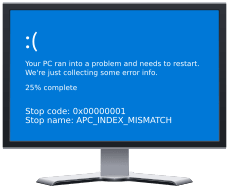
Как убрать « PROCESS1_INITIALIZATION_FAILED» ( 0x0000006B)?
На компьютере или ноутбуке под управлением Windows появился «синий экран смерти»? После появления сообщения «
PROCESS1_INITIALIZATION_FAILED» (
0x0000006B) система перезагружается? Ищите как исправить
0x0000006B: «
PROCESS1_INITIALIZATION_FAILED»?
Как просмотреть информацию об ошибках, исправить ошибки в Windows 10, 8 или 7
Причины появления ошибки
- На жестком диске компьютера или ноутбука не достаточно места. Для правильной работы ОС Windows 10 на системном диске должно быть свободно 2 — 10 ГБ.
- На компьютер был установлен не совместимый BIOS или прошивка была повреждена.
- Установлены не совместимые с ОС драйвера устройств.
- Реестр Windows был поврежден или удален. Возможно в результате очистки были удалены системные ключи реестра.
- Ативирусное программное обеспечение или компьютерные вирусы могут заблокировать системные файлы или удалить важные ключи реестра.
- В результате ошибок в работе программы для резервного копирования.
- В результате обновления ОС Windows.
Актуально для ОС: Windows 10, Windows 8.1, Windows Server 2012, Windows 8, Windows Home Server 2011, Windows 7 (Seven), Windows Small Business Server, Windows Server 2008, Windows Home Server, Windows Vista, Windows XP, Windows 2000, Windows NT.
Вот несколько способов исправления ошибки «
PROCESS1_INITIALIZATION_FAILED»:
Восстановите удаленные файлы
Часто появление BSoD ошибок приводит к утери важных файлов. Блокировка файлов компьютерными вирусами, ошибки в работе программ для резервного копирования, повреждение или перезапись системных файлов, ошибки файловой системы или наличие битых секторов диска – это не далеко полный список причин удаления данных.
Исправление соответствующих ошибок восстановит работоспособность устройства, но не всегда восстановит повреждённые или утерянные файлы. Не всегда имеется возможность устранить ту или иную ошибку без форматирования диска или чистой установки операционной системы, что также может повлечь за собой утерю файлов.
Загрузите бесплатно и просканируйте ваше устройство с помощью Hetman Partition Recovery. Ознакомьтесь с возможностями программы и пошаговой инструкцией.
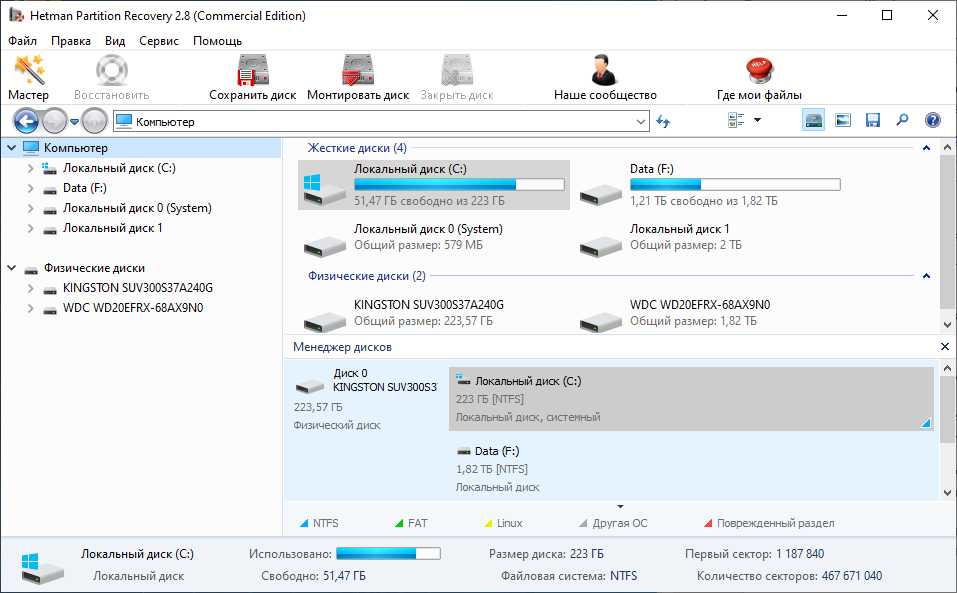
Программа для восстановления данных
Запустите компьютер в «безопасном режиме»
Если ошибка «PROCESS1_INITIALIZATION_FAILED» (0x0000006B) возникает в момент загрузки Windows и блокирует любую возможность работы с системой, попробуйте включить компьютер в «безопасном режиме». Этот режим предназначен для диагностики операционной системы (далее ОС), но функционал Windows при этом сильно ограничен. «Безопасный режим» следует использовать только если работа с системой заблокирована.
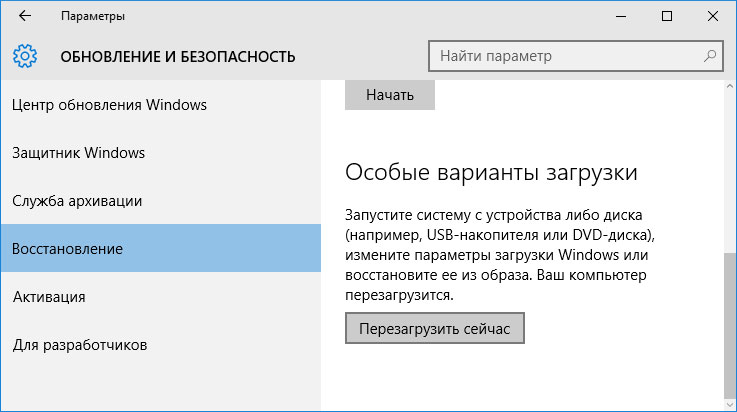
Чтобы запустить безопасный режим сделайте следующее:
- Перейдите в меню Пуск и выберите Параметры.
- В открывшемся окне параметров перейдите в меню Обновление и Безопасность и выберите раздел Восстановление.
- В разделе Восстановление найдите Особые варианты загрузки и нажмите кнопку Перезагрузить сейчас.
- После этого Windows перезагрузится и предложит выбрать следующее действие. Выберите Поиск и устранение неисправностей.
- В меню Поиск и устранение неисправностей кликните на Дополнительные параметры, далее — Параметры загрузки.
- Далее Windows уведомит вас о том, что компьютер можно перезагрузить с использованием дополнительных параметров загрузки. Укажите — Включить безопасный режим. Нажмите Перезагрузить.
- После перезагрузки выберите Включить безопасный режим нажав клавишу F4.
Как загрузить Windows в безопасном режиме
Обновите драйвер через Диспетчер устройств
Вы установили новое аппаратное обеспечение на компьютере? Возможно вы начали использовать новое USB-устройство с вашим компьютером. Это могло привести к ошибке «PROCESS1_INITIALIZATION_FAILED». Если вы установили драйвер устройства используя диск, который поставляется вместе с ним, или использовали драйвер не c официального сайта Microsoft, то причина в нем. Вам придется обновить драйвер устройства, чтобы устранить эту проблему.

Вы можете сделать это вручную в диспетчере устройств Windows, для того выполните следующие инструкции:
- Нажмите кнопку Windows, затем введите диспетчер устройств с клавиатуры.
- Выберите Диспетчер устройств из списка.
- Просмотрите список категорий устройств, нажмите на стрелочку рядом с категорией вашего нового устройства. Драйвер может быть отмечен желтым треугольником.
- Кликните правой кнопкой мыши на имя устройства и нажмите Обновить драйвер.
- Далее откроется окно Мастера обновления драйверов с двумя опциями:
- Автоматический поиск обновленных драйверов. Windows проверит наличие наиболее подходящего драйвера для этого устройства в автоматическом режиме.
- Выполнить поиск драйверов на этом компьютере. Используйте эту опцию, что бы самостоятельно указать ОС файлы драйвера.
Перезагрузите компьютер после установки драйвера.
Используйте sfc /scannow для проверки всех файлов системы
Повреждение или перезапись системных файлов может привести к ошибке «PROCESS1_INITIALIZATION_FAILED». Команда sfc находит поврежденные системные файлы Windows и заменяет их.
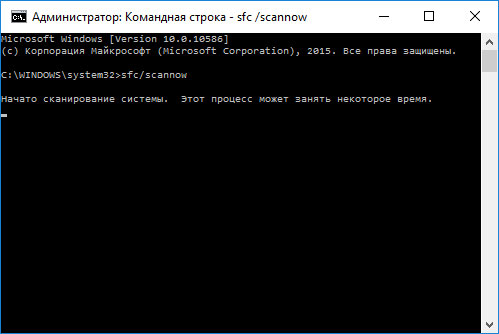
- Нажмите кнопку Windows, затем введите cmd с клавиатуры.
- Правой кнопкой мышки кликните на CMD и запустите от имени администратора.
- В окне командной строки введите sfc /scannow и нажмите Enter.
Этот процесс может занять несколько минут.
Как восстановить системные файлы Windows 10
Проверьте диск с Windows на наличие ошибок командой chkdsk c: /f
Возможно к синему экрану с «PROCESS1_INITIALIZATION_FAILED» привела ошибка файловой системы или наличие битых секторов диска. Команда CHKDSK проверяет диск на наличие ошибок файловой системы и битых секторов. Использование параметра /f заставит программу автоматически исправлять найденные на диске ошибки, а параметр /r позволяет найти и «исправить» проблемные сектора диска. Для запуска следуйте инструкциям:
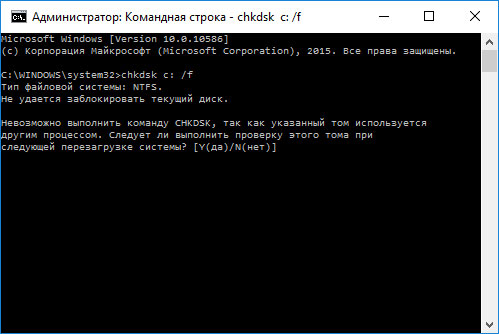
- Нажмите кнопку Windows, затем введите CMD с клавиатуры.
- Правой кнопкой мышки кликните на CMD и запустите от имени администратора.
- В окне командной строки введите chkdsk c: /f и нажмите Enter (используйте ту букву диска, на котором установлена ОС).
Дождитесь окончания процесса и перезагрузите компьютер.
Используйте режим совместимости со старой версией Windows
Отключите лишние программы из автозагрузки Windows
Программное обеспечение, вызывающее «PROCESS1_INITIALIZATION_FAILED» (0x0000006B), может быть прописано в автозагрузку Windows и ошибка будет появляться сразу после запуска системы без вашего участия. Удалить программы из автозагрузки можно с помощью Диспетчера задач.
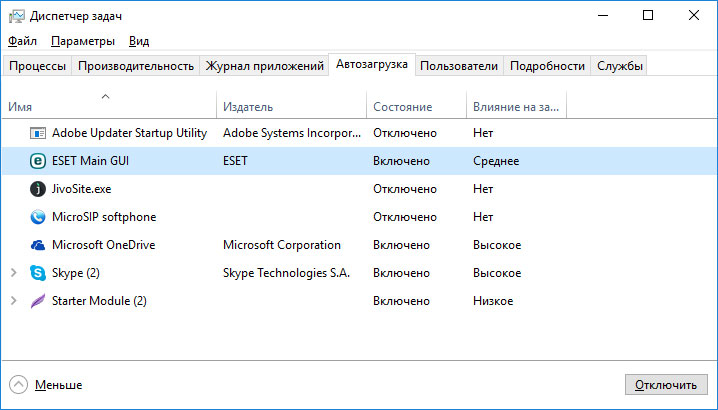
- Загрузитесь в Безопасном режиме.
- Кликните правой кнопкой мышки на Панели задач, затем на пункте Диспетчер задач.
- Перейдите на вкладку Автозагрузка.
- Чтобы убрать ту или иную программу из автозагрузки выберите её из списка и отключите, нажав кнопку Отключить в правом нижнем углу окна.
Обратитесь в поддержку Microsoft
Microsoft предлагает несколько решений удаления ошибки «голубого экрана». «PROCESS1_INITIALIZATION_FAILED» (0x0000006B) можно убрать с помощью Центра обновления или обратившись в поддержку Windows.
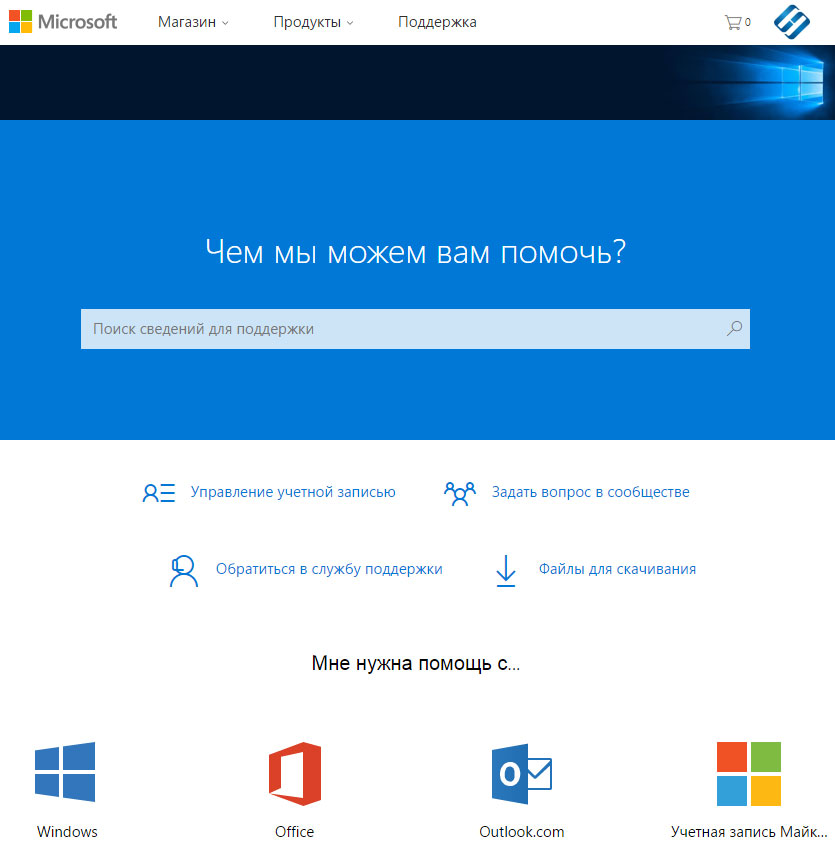
- Перейдите на сайт технической поддержки Microsoft.
- Введите код и сообщение об ошибке в поисковую строку и следуйте найденным рекомендациям.
- Если вы не найдете готового решения, то задайте вопрос в сообществе — возможно вам ответит сертифицированный системный администратор.
Установите последние обновления системы
С обновлениями Windows дополняет базу драйверов, исправляет ошибки и уязвимости в системе безопасности. Загрузите последние обновления, что бы избавиться от ошибки «PROCESS1_INITIALIZATION_FAILED» (0x0000006B).
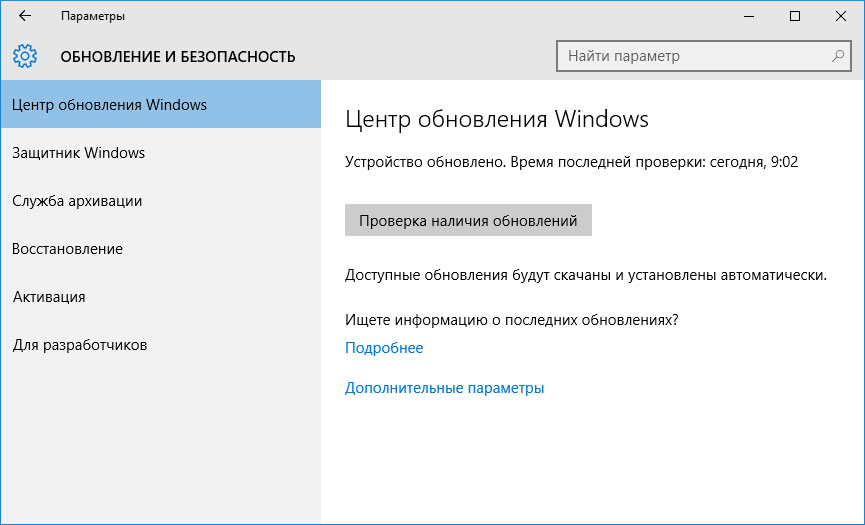
Запустить Центр обновления Windows можно следующим образом:
- Перейдите в меню Пуск и выберите Параметры.
- В окне Параметров перейдите в меню Обновление и Безопасность.
- Для установки последних обновлений Windows нажмите кнопку Проверка наличия обновлений и дождитесь окончания процесса их поиска и установки.
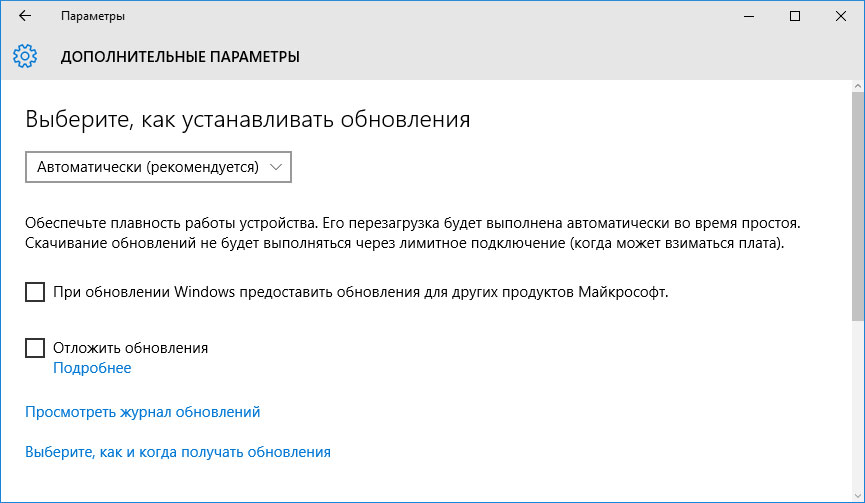
Рекомендуется настроить автоматическую загрузку и установку обновлений операционной системы с помощью меню Дополнительные параметры.
Чтобы включить автоматическое обновление системы необходимо запустить Центр обновления Windows:
- Перейдите в меню Пуск и выберите Параметры.
- В окне Параметров перейдите в меню Обновление и Безопасность и выберите подменю Центр обновления Windows. Для установки последних обновлений Windows нажмите кнопку Проверка наличия обновлений и дождитесь окончания процесса их поиска и установки.
- Перейдите в Дополнительные параметры и выберите, как устанавливать обновления — Автоматически.
Запустите проверку системы на вирусы
«Синий экран смерти» с ошибкой «PROCESS1_INITIALIZATION_FAILED» 0x0000006B может вызывать компьютерный вирус, заразивший систему Windows.
Для проверки системы на наличие вирусов запустите установленную на компьютере антивирусную программу.

Современные антивирусы позволяют проверить как жесткие диски, так и оперативную память. Выполните полную проверку системы.
Выполните проверку оперативной памяти
Неполадки с памятью могут привести к ошибкам, потере информации или прекращению работы компьютера.
Прежде чем проверять оперативную память, отключите её из разъёма на материнской плате компьютера и повторно вставьте в него. Иногда ошибка PROCESS1_INITIALIZATION_FAILED» вызвана неправильно или не плотно вставленной в разъём планкой оперативной памяти, или засорением контактов разъёма.
Если предложенные действия не привели к положительному результату, исправность оперативной памяти можно проверить средствами операционной системы, с помощью средства проверки памяти Windows.
Запустить средство проверки памяти Windows можно двумя способами:
- С помощью Панели управления:
Перейдите в Панель управления / Система и безопасность / Администрирование. Запустите приложение Средство проверки памяти Windows.
- С помощью средства Выполнить:
Запустите средство Выполнить с помощью комбинации клавиш Windows + R. Наберите mdsched и нажмите Enter. После чего откроется средство проверки Windows.
Для начала проверки выберите один из предлагаемых вариантов, проверка оперативной памяти в соответствии с которым будет запущена после перезагрузки компьютера.
Если в результате проверки будут определены ошибки, исправить которые не представляется возможным, то такую память необходимо заменить (замене подлежит модуль памяти с неполадками).
Выполните «чистую» установку Windows
Если не один из перечисленных методов не помог избавиться от PROCESS1_INITIALIZATION_FAILED», попробуйте переустановить Windows. Для того чтобы выполнить чистую установку Windows необходимо создать установочный диск или другой носитель с которого планируется осуществление установки операционной системы.
Загрузите компьютер из установочного диска. Для этого может понадобиться изменить устройство загрузки в BIOS или UEFI для более современных компьютеров.
Следуя пунктам меню установщика укажите диск, на который вы хотите установить Windows. Для этого понадобится отформатировать его. Если вас не устраивает количество или размер локальных дисков, их можно полностью удалить и заново перераспределить.
Помните, что форматирование, удаление или перераспределения дисков удалит все файлы с жесткого диска.
После указания диска для установки Windows запуститься процесс копирования системных файлов и установки операционной системы. Во время установки от вас не потребуется дополнительных действий. В течении установки экран компьютера будет несколько раз гаснуть на непродолжительное время, и для завершения некоторых этапов установки компьютер будет самостоятельно перезагружаться.
В зависимости от версии Windows на одном из этапов от вас может понадобиться выбрать или внести базовые параметры персонализации, режим работы компьютера в сети, а также параметры учётной записи или создать новую.
После загрузки рабочего стола чистую установку Windows можно считать законченной.
Примечание. Прежде чем приступить к выполнению чистой установки Windows заранее побеспокойтесь о наличии драйверов ко всем установленным устройствам и сохранности ваших файлов. Загрузите и сохраните драйвера на отдельный носитель информации, а для важных данных создайте резервную копию.
Как сбросить Windows 10 к исходному состоянию
Как сбросить Windows 10, 8, 7 если компьютер не загружается
Windows 7 Starter Windows 7 Home Basic Windows 7 Home Premium Windows 7 Professional Windows 7 Ultimate Windows 7 Enterprise Windows Server 2008 R2 Web Edition Windows Server 2008 R2 Foundation Windows Server 2008 R2 Standard Windows Server 2008 R2 Enterprise Windows Server 2008 R2 Datacenter Windows Server 2008 R2 for Itanium-Based Systems Windows HPC Server 2008 R2 Еще…Меньше
Не уверены, что решение правильное? Мы добавили эту неполадку к нашей диагностике дампа памяти, которую можно провести.
Проблема
Ваш компьютер работает под управлением Windows 7 или Windows Server 2008 R2. Однако он аварийно завершает работу во время запуска перед запросом учетных данных пользователя. Кроме того, появляется такое сообщение о STOP-ошибке:
STOP: 0x0000006B (Parameter1, Parameter2, Parameter3, Parameter4)
PROCESS1_INITIALIZATION_FAILED
Примечание. Названия четырех параметров в сообщении о STOP-ошибке могут зависеть от конфигурации компьютера.
Причина
Неполадка возникает из-за повреждения файла Bootcat.cache или вследствие изменения его размера после последнего успешного запуска.
Примечание. Файл Bootcat.cache расположен по адресу %SystemRoot%system32codeintegrity.
Решение
Чтобы решить эту проблему, установите пакет обновления 1 для Windows 7 и Windows Server 2008 R2. Майкрософт не предоставляет поддерживаемое исправление для этой проблемы. Чтобы получить дополнительные сведения об этом пакете обновления, щелкните номер следующей статьи в базе знаний Майкрософт:
976932 Сведения о пакете обновления 1 для Windows 7 и Windows Server 2008 R2
Временное решение
Чтобы обойти эту неполадку, запустите компьютер с жесткого диска или USB-накопителя с помощью установочного носителя Windows. Удалите файл Bootcat.cache, и перезапустите компьютер.
Статус
Майкрософт подтвердила наличие этой проблемы в ее продуктах, перечисленных в разделе «Применимость».
Дополнительная информация
Чтобы получить дополнительные сведения о терминологии обновления программного обеспечения, щелкните номер следующей статьи в базе знаний Майкрософт:
824684 Описание стандартной терминологии, используемой для описания обновлений программного обеспечения Майкрософт
Нужна дополнительная помощь?
В данной статье мы с вами будем рассматривать синий экран смерти, который именуется PROCESS1_INITIALIZATION_FAILED и имеет номер 0x0000006B. Что сами Майкрософт говорят по поводу этой проблемы? Они говорят вот что: «Данная проблема появляется вследствие повреждения файла Bootcat.cache или же из-за изменения размера этого файла». Из этого мы точно можем утверждать, что проблема заключается в файле Bootcat.cache. Также нельзя исключать таких вещей, как повреждения системных файлов, аппаратных компонентов, кабелей или прочее. Синий экран смерти PROCESS1_INITIALIZATION_FAILED может проявлять себя на большинстве версий операционной системы Windows.
В сообщении этого критического сбоя присутствует следующая информация:
STOP: 0x0000006B (Параметр1, Параметр2, Параметр3, Параметр4)
PROCESS1_INITIALIZATION_FAILED
Заметка: эти четыре параметра могут меняться в зависимости от конфигурации компьютера пользователя.
Помимо прочего, этот синий экран смерти можно увидеть даже на клиентах, серверных машинах и смартфонах. В данной статье мы опишем целых 8 методов, которые помогут разрешить вам эту непростую ситуацию.
Содержание
- Решаем сбой PROCESS1_INITIALIZATION_FAILED
- Метод №1 Удаление файла Bootcat.cache
- Метод №2 Копирование Bootcat.cache с другого компьютера
- Метод №3 Удаление файла COMPONENTS
- Метод No4 Установка Windows 7 SP1
- Метод No5 Удаление Roxio GoBack
- Метод №6 Восстановление Windows с помощью утилиты DISM
- Метод №7 Исключить папку от сканирований
- Метод №8 Использование утилиты CHKDSK
Решаем сбой PROCESS1_INITIALIZATION_FAILED
Метод №1 Удаление файла Bootcat.cache
Следуя из сообщения Майкрософт, первым вашим шагом станет удаление файла Bootcat.cache из папки CodeIntegrity. Данный файл располагается в директории C:WindowsSystem32Codeintegrity. Вам понадобится загрузить компьютер через диск восстановления системы Windows. Если вы не знаете, как создать этот диск, то пройдите по этой ссылке на сайт Майкрософт, где написаны точные инструкции по его созданию. Создав этот диск, сделайте следующее:
- Вставьте диск или же флеш-носитель в свой компьютер.
- Перезапустите компьютер.
- Загрузите систему через диск восстановления Windows.
- Выберите предпочитаемый язык и другие параметры, а затем нажмите «Далее» для продолжения.
- Кликните на кнопку «Восстановление системы».
- Далее пройдите путем «Диагностика→Дополнительные параметры→Командная строка»
- Выберите пункт «Командная строка».
- Впишите в нее команду diskpart.
- Впишите list volume и нажмите Enter.
- Запомните в каком разделе находится ваша ОС, затем впишите Exit и нажмите Enter.
- Впишите C:(укажите тот раздел, в котором находится ваша ОС) и нажмите Enter.
- Впишите cd windowssystem32codeintegrity и нажмите Enter.
- Впишите del bootcat.cache и нажмите Enter.
- Закройте Командную строку.
- Перезагрузите свой компьютер, а затем попытайтесь зайти в систему обычным путем.
Метод №2 Копирование Bootcat.cache с другого компьютера
Если первый метод вам не помог в решении проблемы с синим экраном смерти PROCESS1_INITIALIZATION_FAILED, то вы должны попробовать этот метод, который включает в себя копирование файла Bootcat.cache с другого компьютера, подразумевая, что тот работает там корректно. Также как и в предыдущем методе, вам снова придется загрузить свою систему через диск восстановления.
- Найдите другой компьютер и зайдите в его операционную систему.
- Вставьте в флеш-устройство в компьютер.
- Нажмите Windows+E чтобы открыть Проводник Windows.
- Пройдите в директорию C:WindowsSystem32Codeintegrity.
- Копируйте файл Bootcat.cache к себе на флеш-устройство.
- Вставьте флеш-хранилище в компьютер, у которого проблемы с синим экраном смерти PROCESS1_INITIALIZATION_FAILED.
- Запустите проблемный компьютер через диск восстановления Windows и доберитесь до Командной строки, как это было показано в предыдущем методе.
- Открыв Командную строку, впишите в нее команду diskpart.
- Впишите list volume и нажмите Enter.
- Запомните в каком разделе находится ваша ОС, затем впишите Exit и нажмите Enter.
- Впишите C:(укажите тот раздел, в котором находится ваша ОС) и нажмите Enter.
- Впишите cd windowssystem32codeintegrity и нажмите Enter.
- Впишите copy E:bootcat.cache(впишите ту букву, под которой выступает ваше флеш-хранилище) и нажмите Enter.
- Закройте Командную строку.
- Перезагрузите свой компьютер.
Метод №3 Удаление файла COMPONENTS
Итак, если ничего из вышеперечисленного не помогло, а такое вполне возможно, то давайте двигаться дальше. На этот раз мы с вами попробуем сделать кое-что другое – удаление файла COMPONENTS из директории windowssystem32config. Данное действие также зарекомендовало себя отличным способом по борьбе с синим экраном смерти PROCESS1_INITIALIZATION_FAILED.
- Снова запустите свою ОС через диск восстановления.
- Пройдите весь путь до Командной строки, как это было уже показано в предыдущих методах.
- Впишите команду diskpart и нажмите Enter.
- Впишите list volume и нажмите Enter.
- Впишите Exit и нажмите Enter.
- Впишите cd windowssystem32config и нажмите Enter.
- Впишите del components и нажмите Enter.
- Закройте Командную строку.
- Перезагрузите свой компьютер.
Ну что, ваша система все еще загружается с синим экраном смерти PROCESS1_INITIALIZATION_FAILED? Ок, тогда давайте двигаться далее.
Метод No4 Установка Windows 7 SP1
Если вы используете Windows 7 без SP1, то вам нужно попробовать установить этот сервисный пакет для вашей операционной системы. Все что вам нужно сделать, так это пройти в Центр загрузок Майкрософт и скачать от туда необходимый сервисный пакет. Однако, будьте внимательно, что именно вы скачивайте. Обязательно отталкивайтесь от того, какой разрядностью обладает ваша система, т.е. 32-битная или 64-битная. Загрузите Windows 7 SP1, установите его и перезагрузите систему. Затем проверьте, появляется ли синий экран смерти PROCESS1_INITIALIZATION_FAILED.
Метод No5 Удаление Roxio GoBack
Если вы используете программное обеспечение Roxio GoBack, то вам нужно попробовать удалить его, чтобы проверить, не вызывает ли ли оно уже оговоренный синий экран смерти. Удаляется Roxio GoBack довольно просто через Программы и компоненты.
- Нажмите на клавиатуре Windows+R.
- Впишите appwiz.cpl и нажмите Enter.
- Выберите Roxio GoBack и удалите ее.
- Перезагрузите компьютер.
- Протестируйте систему на стабильность.
Возможно, что именно эта утилита и стояла за таким серьезным сбоем в системе, как PROCESS1_INITIALIZATION_FAILED. Однако, если ничего не изменилось, то давайте двигаться дальше по нашему списку методов.
Метод №6 Восстановление Windows с помощью утилиты DISM
Для выполнения этого метода, нам потребуется использовать утилиту под названием DISM. DISM – это команда, которая позволяет вам монтировать образ Windows(install.wim) и выполнять такие действия, как установку, удаление, настройку и обновление операционной системы. DISM является компонентом комплекта средств для развертывания и оценки Windows(Windows ADK), который можно загрузить по этой ссылке. Итак, чтобы восстановить Windows с помощью утилиты DISM, вам потребуется сделать следующее:
- Для начала загрузите Windows ADK, а затем установите DISM.
- Нажмите на Пуск и впишите в поисковик запрос «Система обслуживания образов развертывания и управления ими».
- Нажмите на найденный результат ПКМ и выберите Запустить от Администратора.
- Впишите в нее DISM /image:D: /cleanup-image /revertpendingactions и нажмите Enter.
- После выполнения команды, перезагрузите свой компьютер, а затем протестируйте систему на наличие синего экрана смерти PROCESS1_INITIALIZATION_FAILED.
Метод №7 Исключить папку от сканирований
Антивирусное программное обеспечение также может стоять у истоков проблемы с появлением оговоренного синего экрана смерти. Чтобы исправить это, вам нужно исключить папки CodeIntegrity и catroot от сканирования антивирусом. Сейчас мы покажем вам как это делать на примере Защитника Windows. Если вы используете иной антивирус, то это не беда, так как там, скорее всего, будут применимы эти шаги.
- Кликните на Пуск и впишите в поисковик запрос «Защитник Windows».
- Нажмите на найденный результат ПКМ и выберите «Запустить от имени Администратора».
- Перейдите во вкладку «Параметры».
- Кликните на «Добавить исключение».
- Кликните на «Исключить папку».
- Пройдите в директорию C:WindowsSystem32CodeIntegrity.
- Кликните «Исключить эту папку».
- Кликните на «Исключить папку» еще один раз.
- Пройдите в директорию C:WindowsSystem32catroot.
- Кликните «Исключить эту папку».
- Еще раз хорошенько проверьте, исключили ли вы нужные вам папки.
Возможно, синий экран смерти PROCESS1_INITIALIZATION_FAILED появлялся в случае сканирования этих папок. По крайней мере, так утверждают некоторые пользователи в Интернете. Ну что, проблема все еще преследует вас?
Метод №8 Использование утилиты CHKDSK
Когда ваш жесткий диск не работает как надо, то на нем могут появиться поврежденные данные или же плохие сектора. В этом случае вам поможет довольно неплохая системная утилита CHKDSK, которая поможет найти вам бэдблоки и исправить их, но только если это будет возможно.
- Нажмите ПКМ на Пуск и выберите «Командная строка(администратор)».
- Впишите chkdsk /r и нажмите Enter.
- Далее напишите Y и нажмите Enter, чтобы принять перезагрузку компьютера.
- Подождите, пока утилита завершит починку файловой системы на компьютере. Должны завершиться все пять стадий операции.
Мы надеемся, что данная статья помогла вам преодолеть проблему в виде синего экрана смерти PROCESS1_INITIALIZATION_FAILED. Если же он так и продолжает постоянно проявляться, то вы также можете еще попробовать выполнить восстановление системы с помощью ранее созданной точки или через бэкап. Если и это не помогло, то это может означать, что у вас присутствуют проблемы аппаратного характера, например, виновниками могли стать ваш HDD/SSD или же оперативная память.
Skip to content
Как убрать PROCESS1_INITIALIZATION_FAILED (0x0000006B)?
Как убрать « PROCESS1_INITIALIZATION_FAILED» ( 0x0000006B)?
На компьютере или ноутбуке под управлением Windows появился «синий экран смерти»? После появления сообщения «
PROCESS1_INITIALIZATION_FAILED» (
0x0000006B) система перезагружается? Ищите как исправить
0x0000006B: «
PROCESS1_INITIALIZATION_FAILED»?
Как просмотреть информацию об ошибках, исправить ошибки в Windows 10, 8 или 7
Причины появления ошибки
- На жестком диске компьютера или ноутбука не достаточно места. Для правильной работы ОС Windows 10 на системном диске должно быть свободно 2 — 10 ГБ.
- На компьютер был установлен не совместимый BIOS или прошивка была повреждена.
- Установлены не совместимые с ОС драйвера устройств.
- Реестр Windows был поврежден или удален. Возможно в результате очистки были удалены системные ключи реестра.
- Ативирусное программное обеспечение или компьютерные вирусы могут заблокировать системные файлы или удалить важные ключи реестра.
- В результате ошибок в работе программы для резервного копирования.
- В результате обновления ОС Windows.
Актуально для ОС: Windows 10, Windows 8.1, Windows Server 2012, Windows 8, Windows Home Server 2011, Windows 7 (Seven), Windows Small Business Server, Windows Server 2008, Windows Home Server, Windows Vista, Windows XP, Windows 2000, Windows NT.
Вот несколько способов исправления ошибки «
PROCESS1_INITIALIZATION_FAILED»:
Восстановите удаленные файлы
Часто появление BSoD ошибок приводит к утери важных файлов. Блокировка файлов компьютерными вирусами, ошибки в работе программ для резервного копирования, повреждение или перезапись системных файлов, ошибки файловой системы или наличие битых секторов диска – это не далеко полный список причин удаления данных.
Исправление соответствующих ошибок восстановит работоспособность устройства, но не всегда восстановит повреждённые или утерянные файлы. Не всегда имеется возможность устранить ту или иную ошибку без форматирования диска или чистой установки операционной системы, что также может повлечь за собой утерю файлов.
Загрузите бесплатно и просканируйте ваше устройство с помощью Hetman Partition Recovery. Ознакомьтесь с возможностями программы и пошаговой инструкцией.
Программа для восстановления данных
Запустите компьютер в «безопасном режиме»
Если ошибка «PROCESS1_INITIALIZATION_FAILED» (0x0000006B) возникает в момент загрузки Windows и блокирует любую возможность работы с системой, попробуйте включить компьютер в «безопасном режиме». Этот режим предназначен для диагностики операционной системы (далее ОС), но функционал Windows при этом сильно ограничен. «Безопасный режим» следует использовать только если работа с системой заблокирована.
Чтобы запустить безопасный режим сделайте следующее:
- Перейдите в меню Пуск и выберите Параметры.
- В открывшемся окне параметров перейдите в меню Обновление и Безопасность и выберите раздел Восстановление.
- В разделе Восстановление найдите Особые варианты загрузки и нажмите кнопку Перезагрузить сейчас.
- После этого Windows перезагрузится и предложит выбрать следующее действие. Выберите Поиск и устранение неисправностей.
- В меню Поиск и устранение неисправностей кликните на Дополнительные параметры, далее — Параметры загрузки.
- Далее Windows уведомит вас о том, что компьютер можно перезагрузить с использованием дополнительных параметров загрузки. Укажите — Включить безопасный режим. Нажмите Перезагрузить.
- После перезагрузки выберите Включить безопасный режим нажав клавишу F4.
Как загрузить Windows в безопасном режиме
Обновите драйвер через Диспетчер устройств
Вы установили новое аппаратное обеспечение на компьютере? Возможно вы начали использовать новое USB-устройство с вашим компьютером. Это могло привести к ошибке «PROCESS1_INITIALIZATION_FAILED». Если вы установили драйвер устройства используя диск, который поставляется вместе с ним, или использовали драйвер не c официального сайта Microsoft, то причина в нем. Вам придется обновить драйвер устройства, чтобы устранить эту проблему.
Вы можете сделать это вручную в диспетчере устройств Windows, для того выполните следующие инструкции:
- Нажмите кнопку Windows, затем введите диспетчер устройств с клавиатуры.
- Выберите Диспетчер устройств из списка.
- Просмотрите список категорий устройств, нажмите на стрелочку рядом с категорией вашего нового устройства. Драйвер может быть отмечен желтым треугольником.
- Кликните правой кнопкой мыши на имя устройства и нажмите Обновить драйвер.
- Далее откроется окно Мастера обновления драйверов с двумя опциями:
- Автоматический поиск обновленных драйверов. Windows проверит наличие наиболее подходящего драйвера для этого устройства в автоматическом режиме.
- Выполнить поиск драйверов на этом компьютере. Используйте эту опцию, что бы самостоятельно указать ОС файлы драйвера.
Перезагрузите компьютер после установки драйвера.
Используйте sfc /scannow для проверки всех файлов системы
Повреждение или перезапись системных файлов может привести к ошибке «PROCESS1_INITIALIZATION_FAILED». Команда sfc находит поврежденные системные файлы Windows и заменяет их.
- Нажмите кнопку Windows, затем введите cmd с клавиатуры.
- Правой кнопкой мышки кликните на CMD и запустите от имени администратора.
- В окне командной строки введите sfc /scannow и нажмите Enter.
Этот процесс может занять несколько минут.
Как восстановить системные файлы Windows 10
Проверьте диск с Windows на наличие ошибок командой chkdsk c: /f
Возможно к синему экрану с «PROCESS1_INITIALIZATION_FAILED» привела ошибка файловой системы или наличие битых секторов диска. Команда CHKDSK проверяет диск на наличие ошибок файловой системы и битых секторов. Использование параметра /f заставит программу автоматически исправлять найденные на диске ошибки, а параметр /r позволяет найти и «исправить» проблемные сектора диска. Для запуска следуйте инструкциям:
- Нажмите кнопку Windows, затем введите CMD с клавиатуры.
- Правой кнопкой мышки кликните на CMD и запустите от имени администратора.
- В окне командной строки введите chkdsk c: /f и нажмите Enter (используйте ту букву диска, на котором установлена ОС).
Дождитесь окончания процесса и перезагрузите компьютер.
Используйте режим совместимости со старой версией Windows
Отключите лишние программы из автозагрузки Windows
Программное обеспечение, вызывающее «PROCESS1_INITIALIZATION_FAILED» (0x0000006B), может быть прописано в автозагрузку Windows и ошибка будет появляться сразу после запуска системы без вашего участия. Удалить программы из автозагрузки можно с помощью Диспетчера задач.
- Загрузитесь в Безопасном режиме.
- Кликните правой кнопкой мышки на Панели задач, затем на пункте Диспетчер задач.
- Перейдите на вкладку Автозагрузка.
- Чтобы убрать ту или иную программу из автозагрузки выберите её из списка и отключите, нажав кнопку Отключить в правом нижнем углу окна.
Обратитесь в поддержку Microsoft
Microsoft предлагает несколько решений удаления ошибки «голубого экрана». «PROCESS1_INITIALIZATION_FAILED» (0x0000006B) можно убрать с помощью Центра обновления или обратившись в поддержку Windows.
- Перейдите на сайт технической поддержки Microsoft.
- Введите код и сообщение об ошибке в поисковую строку и следуйте найденным рекомендациям.
- Если вы не найдете готового решения, то задайте вопрос в сообществе — возможно вам ответит сертифицированный системный администратор.
Установите последние обновления системы
С обновлениями Windows дополняет базу драйверов, исправляет ошибки и уязвимости в системе безопасности. Загрузите последние обновления, что бы избавиться от ошибки «PROCESS1_INITIALIZATION_FAILED» (0x0000006B).
Запустить Центр обновления Windows можно следующим образом:
- Перейдите в меню Пуск и выберите Параметры.
- В окне Параметров перейдите в меню Обновление и Безопасность.
- Для установки последних обновлений Windows нажмите кнопку Проверка наличия обновлений и дождитесь окончания процесса их поиска и установки.
Рекомендуется настроить автоматическую загрузку и установку обновлений операционной системы с помощью меню Дополнительные параметры.
Чтобы включить автоматическое обновление системы необходимо запустить Центр обновления Windows:
- Перейдите в меню Пуск и выберите Параметры.
- В окне Параметров перейдите в меню Обновление и Безопасность и выберите подменю Центр обновления Windows. Для установки последних обновлений Windows нажмите кнопку Проверка наличия обновлений и дождитесь окончания процесса их поиска и установки.
- Перейдите в Дополнительные параметры и выберите, как устанавливать обновления — Автоматически.
Запустите проверку системы на вирусы
«Синий экран смерти» с ошибкой «PROCESS1_INITIALIZATION_FAILED» 0x0000006B может вызывать компьютерный вирус, заразивший систему Windows.
Для проверки системы на наличие вирусов запустите установленную на компьютере антивирусную программу.
Современные антивирусы позволяют проверить как жесткие диски, так и оперативную память. Выполните полную проверку системы.
Выполните проверку оперативной памяти
Неполадки с памятью могут привести к ошибкам, потере информации или прекращению работы компьютера.
Прежде чем проверять оперативную память, отключите её из разъёма на материнской плате компьютера и повторно вставьте в него. Иногда ошибка PROCESS1_INITIALIZATION_FAILED» вызвана неправильно или не плотно вставленной в разъём планкой оперативной памяти, или засорением контактов разъёма.
Если предложенные действия не привели к положительному результату, исправность оперативной памяти можно проверить средствами операционной системы, с помощью средства проверки памяти Windows.
Запустить средство проверки памяти Windows можно двумя способами:
- С помощью Панели управления:
Перейдите в Панель управления / Система и безопасность / Администрирование. Запустите приложение Средство проверки памяти Windows.
- С помощью средства Выполнить:
Запустите средство Выполнить с помощью комбинации клавиш Windows + R. Наберите mdsched и нажмите Enter. После чего откроется средство проверки Windows.
Для начала проверки выберите один из предлагаемых вариантов, проверка оперативной памяти в соответствии с которым будет запущена после перезагрузки компьютера.
Если в результате проверки будут определены ошибки, исправить которые не представляется возможным, то такую память необходимо заменить (замене подлежит модуль памяти с неполадками).
Выполните «чистую» установку Windows
Если не один из перечисленных методов не помог избавиться от PROCESS1_INITIALIZATION_FAILED», попробуйте переустановить Windows. Для того чтобы выполнить чистую установку Windows необходимо создать установочный диск или другой носитель с которого планируется осуществление установки операционной системы.
Загрузите компьютер из установочного диска. Для этого может понадобиться изменить устройство загрузки в BIOS или UEFI для более современных компьютеров.
Следуя пунктам меню установщика укажите диск, на который вы хотите установить Windows. Для этого понадобится отформатировать его. Если вас не устраивает количество или размер локальных дисков, их можно полностью удалить и заново перераспределить.
Помните, что форматирование, удаление или перераспределения дисков удалит все файлы с жесткого диска.
После указания диска для установки Windows запуститься процесс копирования системных файлов и установки операционной системы. Во время установки от вас не потребуется дополнительных действий. В течении установки экран компьютера будет несколько раз гаснуть на непродолжительное время, и для завершения некоторых этапов установки компьютер будет самостоятельно перезагружаться.
В зависимости от версии Windows на одном из этапов от вас может понадобиться выбрать или внести базовые параметры персонализации, режим работы компьютера в сети, а также параметры учётной записи или создать новую.
После загрузки рабочего стола чистую установку Windows можно считать законченной.
Примечание. Прежде чем приступить к выполнению чистой установки Windows заранее побеспокойтесь о наличии драйверов ко всем установленным устройствам и сохранности ваших файлов. Загрузите и сохраните драйвера на отдельный носитель информации, а для важных данных создайте резервную копию.
Как сбросить Windows 10 к исходному состоянию
Как сбросить Windows 10, 8, 7 если компьютер не загружается
Does your laptop or desktop computer with the Windows OS displaying a blue screen? Do you restart computer after flashing the message «PROCESS1_INITIALIZATION_FAILED»? If you are also facing this problem, this article may help you solve the problem. This article from MiniTool Partition Wizard shows you how to fix error: PROCESS1_INITIALIZATION_FAILED Windows 10.
When the computer is affected by the stop code PROCESS1_INITIALIZATION_FAILED 0x0000006B, the problems that the computer may encounter are frequent restarts, bug checks, irregular screen flickering and temporary freezing of the desktop area.
Problems related to the Bootcat.cache file are the main reason for this Windows 10 PROCESS1_INITIALIZATION_FAILED error. The lack of .dll files, bad areas of the hard disk, using the old version of the operating system also cause the same problem.
When you encounter such a problem, you may look for a way to fix it. Luckily, the following is how to fix the error: Windows 10 PROCESS1_INITIALIZATION_FAILED.
Disable Automatically Restart to Ensure Smooth Operation
Once PROCESS1_INITIALIZATION_FAILED Windows 10 error appears on your computer, the main problem you will face is the frequent automatic restart of Windows 10. So, before fix this error, you need to disable automatic restart to ensure smooth operation.
Step 1: Restart your computer while continuously press the F8 key until you get Windows logo on screen.
Step 2: In this window, select Safe Mode.
Step 3: After Windows boot into Safe Mode, type sysdm.cpl in the search box and click OK.
Step 4: Under the System Properties, select the Settings button located under the Startup and Recovery section.
Step 3: Under the System failure section, uncheck the Automatically restart box. Then click the OK button.
Solution 1: Perform a Windows Startup Repair
PROCESS1_INITIALIZATION_FAILED Windows 10 error caused a very serious system crash in Windows, which may affect Windows 10 startup. Therefore, the Startup Repair tool will fix the problem that restricts Windows 10 startup.
Step 1: Insert the installation media drive (such as CD/DVD/USB) into the Windows 10 computer.
Note: If you don’t have one, go to official Windows and download the media creation tool to create one.
Step 2: Restart Windows and press any key during startup.
Step 3: Choose your language preference. Then Click the Next button.
Step 4: Click Repair your computer.
Step 5: Click Troubleshoot > Advanced options > Startup Repair.
When the Startup Repair is complete, try to boot normally in Windows. If you still receive the «Process1 initialization failed» error, or if Startup Repair fails to repair your PC, please proceed to the next method.
Solution 2: Fix Disk Errors
The bad sectors or the corrupted file system in the hard disk are likely to cause the PROCESS1_INITIALIZATION_FAILED BSOD error in Windows 10.
Way 1. Run CHKDSK Utility
You can use the CHKDSK utility to investigate and repair bad sectors in the disk drive to fix this error.
Step 1: Restart your computer while press the Shift key to enter the Advanced Startup window.
Step 2: Select Troubleshoot and then Advanced Options. In the Advanced Options window, select the Command Prompt option.
Step 3: In Command Prompt, type chkdsk C: /f /r /x command and press Enter key to execute (replace the letter of drive with that your system drive).
Step 4: Run chkdsk command for every partition. After execution, restart the computer and check if the error is resolved.
Way 2. Use MiniTool Partition Wizard
If the above method fails to solve the issue, you can use a professional disk management tool to check hard disk problems. It is recommended that you try MiniTool Partition Wizard. How to use MiniTool Partition Wizard to check hard disk problems? The steps are as follows.
You can use the Check File System and Surface Test feature to help you solve PROCESS1_INITIALIZATION_FAILED BSOD error.
Free Download
Step 1: Launch MiniTool Partition Wizard to get the main interface.
Step 2: Then select the partition on the hard disk and select Check File System on the left operation panel.
Step 3: In the pop-up window, select Check & fix detected errors and click the Start button.
Step 4: MiniTool Partition Wizard will start scanning the file system. After the scan process completed, you can see the scanning and repairing result.
Step 5: Then select the partition on the hard disk and select Surface Test on the left operation panel.
Step 6: In the pop-up window, click the Start Now button to immediately check the bad sectors for Windows 10.
Step 7: When the hard drive error test process is completed, the disk blocks that have no read errors will be marked in green. However, if MiniTool Partition Wizard finds some hard disk errors, the blocks will be marked as red.
Note: This disk management tool detects bad physical sectors. If you find too many bad sectors on the hard drive, you need to replace the disk.
Solution 3: Delete the Bootcat.cache File
Once the Bootcat.cache file is damaged or resized at startup, Windows 10 will encounter PROCESS1_INITIALIZATION_FAILED BSOD. It is a component of CodeIntegrity, and its location in Windows is «C:WindowsSystem32Codeintegrity». In order to solve this PROCESS1_INITIALIZATION_FAILED error, you need to delete Bootcat.cache file. Here are the steps to help you do that.
Step 1: Press the Windows + I key to open Settings, and navigate to the Update & Security > Recovery > Advanced startup option. Then click Restart now.
Step 2: When the blue screen appears, select Troubleshoot > Advanced options > Command Prompt.
Step 3: In the Command Prompt window, type the following commands in order and press Enter:
c:
cd windowssystem32codeintegrity
del bootcat.cache
After the deletion is complete, exit the command prompt and restart Windows 10.
The system will automatically recreate the Bootcat.cache file and fix the PROCESS1_INITIALIZATION_FAILED error.
Solution 4: Copy Bootcat.cache File from Another Computer
If removing the Bootcat.cache file from your computer does not resolve the PROCESS1_INITIALIZATION_FAILED blue screen error, you can copy the Bootcat.cache file from a fully functional and error-free computer running the same version of Windows 10.
Step 1: Insert USB flash drive to another computer.
Step 2: Press Windows + E key to open File Explore and navigate to following location: C:windowssystem32codeintegrity. Then right click on Bootcat.cache file and choose Copy.
Step 3: Remove the drive and insert it into the affected computer.
Step 4: Copy and paste the Bootcat.cache file to C:Windowssystem32codeintegrity.
Solution 5: Replace the NTDLL.DLL from Another Computer
The lack of some DLL files such as ntdll.dll is also the cause of the PROCESS1_INITIALIZATION_FAILED blue screen. To fix the error, you can copy the NTDLL.DLL file from the protected computer and paste it into the System32 folder of the affected computer.
Note: The process is almost similar to copying the Bootcat.cache file, but you need to register after pasting it. The prerequisite is that it is safe to use the USB drive, and the computer you want to copy from must have the same version of Windows 10.
Step 1: Insert USB flash drive to another computer.
Step 2: Go to C:WindowsSystem32 and copy all files with a .dll extension. Paste the project to the USB drive.
Step 3: Remove the drive and insert it into the affected computer.
Step 4: Copy and paste all .dll files to C:WindowsSystem32.
Step 5: Launch the Command Prompt and enter the following command:
regsvr32 (name of DLL file)
Note: Replace the DLL file names with ntdll.dll, wintrust.dll, vbscript.dll, oleaut32.dll, cryptdlg.dll, softpub.dll, jscript.dll, initpki.dll, msxml.dll in sequence. Press Enter after each.
Step 6: Reboot your computer.
Solution 6: Run System File Checker
Damaged or rewritten system files may cause the error «PROCESS1_INITIALIZATION_FAILED». You can use System File Checker to solve these broken system files.
Step 1: Press Windows + S key and type cmd.exe in the search of the box. Then right-click it and select Run as administrator.
Step 2: In the Command Prompt window, type sfc /scannow and press Enter.
Step 3: Restart your computer.
After the image file is damaged by a third-party tool or malware attack, it will cause a blue screen or blue screen error in Windows 10. Therefore, running the DISM (Deployment Image Servicing and Management) tool is the best way to repair defective image files.
Step 1: Press the Windows key to open the Start menu.
Step 2: Click the Power icon and select the Restart option while holding down the Shift key.
Step 3: After the restart is complete, the window will boot to Automatic Repair.
Step 4: In the blue screen that appears, select Troubleshoot > Advanced Options > Command Prompt.
Step 5: In the Command Prompt, type DISM.exe /Online /Cleanup-image /Restorehealth. Then press Enter.
Step 6: After the DISM scan is over, restart your computer.
Solution 8: Update Drivers with Device Manager
Outdated device drivers cause PROCESS1_INITIALIZATION_FAILED errors in Windows 10. Then you can use Device Manager to update and fix them.
Step 1: Press Windows + S key and type Device Manager in the search box. Then press Enter.
Step 2: Refer to the error code you received, and check the update of the driver that caused the problem by right-clicking and selecting Update Driver.
Step 3: In a pop-up window, select Search automatically for updated driver software.
Then your Windows 10 will check, download and install the latest and appropriate driver.
Solution 9: Scan Your Entire System
You can check for malware by scanning the entire system. The steps are as follows:
Step 1: Open the Settings, and navigate to the Update & Security > Windows Security >Virus & threat protection option.
Step 2: In the Windows Defender Security Center, click the Scan now option.
The Windows Defender Security Center will now start to detect if there are any threats on the system. After the scan is over, you will notice the results. If the scan finds any threats, click the Clean threats button to remove them from the system.
Solution 10: Run System Restore
The latest changes in Windows may contradict the Windows registry, resulting in the PROCESS1_INITIALIZATION_FAILED error. So, load back to the previous state through system restore.
Step 1: Press Windows + R key to open Run and type rstrui. Then press Enter key.
Step 2: When the System Restore window opens, click on the Next option to generate a restore of the device.
Step 3: Select the latest and click Next to continue. Finally, click Finish to let start this process.
Note: This method is based on the premise that you have proper system restore points.
Solution 11: Reinstall Windows 10
If none of these methods help you resolve the PROCESS1_INITIALIZATION_FAILED» error, please try to reinstall Windows.
Note: Before installing, please make sure that you have saved a backup and stored all your important data and files in a safe place.
Step 1: Create an installation media (DVD, CD, or USB flash drive) to install the operating system. Then insert it into the computer.
Step 2: When prompted, press any key (F2, DEL, F12) to enter BIOS. Then set the installation media as the first boot order to boot the computer.
Step 3: On the Windows Installer, click the Next button.
Step 4: Click Install now button.
Step 5: Follow the on-screen instructions to complete the setup configuration. When the installation process is completed, you just need to log in with your account.
Here are some solutions about how to fix PROCESS1_INITIALIZATION_FAILED error on Windows 10. I’d like to share them with you. These solutions are easy to operate. You can try it.Click to Tweet
Bottom Line
Now we have reached the end of this article. The above content is all about the solutions for PROCESS1_INITIALIZATION_FAILED Windows 10.
After trying so many solutions, we believe that you may have successfully solved your problem. If you have any suggestions or need any help when you use MiniTool Wizard Partition, you are welcome to send us an email at [email protected] or leave a comment below. Thank you in advance.
Does your laptop or desktop computer with the Windows OS displaying a blue screen? Do you restart computer after flashing the message «PROCESS1_INITIALIZATION_FAILED»? If you are also facing this problem, this article may help you solve the problem. This article from MiniTool Partition Wizard shows you how to fix error: PROCESS1_INITIALIZATION_FAILED Windows 10.
When the computer is affected by the stop code PROCESS1_INITIALIZATION_FAILED 0x0000006B, the problems that the computer may encounter are frequent restarts, bug checks, irregular screen flickering and temporary freezing of the desktop area.
Problems related to the Bootcat.cache file are the main reason for this Windows 10 PROCESS1_INITIALIZATION_FAILED error. The lack of .dll files, bad areas of the hard disk, using the old version of the operating system also cause the same problem.
When you encounter such a problem, you may look for a way to fix it. Luckily, the following is how to fix the error: Windows 10 PROCESS1_INITIALIZATION_FAILED.
Disable Automatically Restart to Ensure Smooth Operation
Once PROCESS1_INITIALIZATION_FAILED Windows 10 error appears on your computer, the main problem you will face is the frequent automatic restart of Windows 10. So, before fix this error, you need to disable automatic restart to ensure smooth operation.
Step 1: Restart your computer while continuously press the F8 key until you get Windows logo on screen.
Step 2: In this window, select Safe Mode.
Step 3: After Windows boot into Safe Mode, type sysdm.cpl in the search box and click OK.
Step 4: Under the System Properties, select the Settings button located under the Startup and Recovery section.
Step 3: Under the System failure section, uncheck the Automatically restart box. Then click the OK button.
Solution 1: Perform a Windows Startup Repair
PROCESS1_INITIALIZATION_FAILED Windows 10 error caused a very serious system crash in Windows, which may affect Windows 10 startup. Therefore, the Startup Repair tool will fix the problem that restricts Windows 10 startup.
Step 1: Insert the installation media drive (such as CD/DVD/USB) into the Windows 10 computer.
Note: If you don’t have one, go to official Windows and download the media creation tool to create one.
Step 2: Restart Windows and press any key during startup.
Step 3: Choose your language preference. Then Click the Next button.
Step 4: Click Repair your computer.
Step 5: Click Troubleshoot > Advanced options > Startup Repair.
When the Startup Repair is complete, try to boot normally in Windows. If you still receive the «Process1 initialization failed» error, or if Startup Repair fails to repair your PC, please proceed to the next method.
Solution 2: Fix Disk Errors
The bad sectors or the corrupted file system in the hard disk are likely to cause the PROCESS1_INITIALIZATION_FAILED BSOD error in Windows 10.
Way 1. Run CHKDSK Utility
You can use the CHKDSK utility to investigate and repair bad sectors in the disk drive to fix this error.
Step 1: Restart your computer while press the Shift key to enter the Advanced Startup window.
Step 2: Select Troubleshoot and then Advanced Options. In the Advanced Options window, select the Command Prompt option.
Step 3: In Command Prompt, type chkdsk C: /f /r /x command and press Enter key to execute (replace the letter of drive with that your system drive).
Step 4: Run chkdsk command for every partition. After execution, restart the computer and check if the error is resolved.
Way 2. Use MiniTool Partition Wizard
If the above method fails to solve the issue, you can use a professional disk management tool to check hard disk problems. It is recommended that you try MiniTool Partition Wizard. How to use MiniTool Partition Wizard to check hard disk problems? The steps are as follows.
You can use the Check File System and Surface Test feature to help you solve PROCESS1_INITIALIZATION_FAILED BSOD error.
Free Download
Step 1: Launch MiniTool Partition Wizard to get the main interface.
Step 2: Then select the partition on the hard disk and select Check File System on the left operation panel.
Step 3: In the pop-up window, select Check & fix detected errors and click the Start button.
Step 4: MiniTool Partition Wizard will start scanning the file system. After the scan process completed, you can see the scanning and repairing result.
Step 5: Then select the partition on the hard disk and select Surface Test on the left operation panel.
Step 6: In the pop-up window, click the Start Now button to immediately check the bad sectors for Windows 10.
Step 7: When the hard drive error test process is completed, the disk blocks that have no read errors will be marked in green. However, if MiniTool Partition Wizard finds some hard disk errors, the blocks will be marked as red.
Note: This disk management tool detects bad physical sectors. If you find too many bad sectors on the hard drive, you need to replace the disk.
Solution 3: Delete the Bootcat.cache File
Once the Bootcat.cache file is damaged or resized at startup, Windows 10 will encounter PROCESS1_INITIALIZATION_FAILED BSOD. It is a component of CodeIntegrity, and its location in Windows is «C:WindowsSystem32Codeintegrity». In order to solve this PROCESS1_INITIALIZATION_FAILED error, you need to delete Bootcat.cache file. Here are the steps to help you do that.
Step 1: Press the Windows + I key to open Settings, and navigate to the Update & Security > Recovery > Advanced startup option. Then click Restart now.
Step 2: When the blue screen appears, select Troubleshoot > Advanced options > Command Prompt.
Step 3: In the Command Prompt window, type the following commands in order and press Enter:
c:
cd windowssystem32codeintegrity
del bootcat.cache
After the deletion is complete, exit the command prompt and restart Windows 10.
The system will automatically recreate the Bootcat.cache file and fix the PROCESS1_INITIALIZATION_FAILED error.
Solution 4: Copy Bootcat.cache File from Another Computer
If removing the Bootcat.cache file from your computer does not resolve the PROCESS1_INITIALIZATION_FAILED blue screen error, you can copy the Bootcat.cache file from a fully functional and error-free computer running the same version of Windows 10.
Step 1: Insert USB flash drive to another computer.
Step 2: Press Windows + E key to open File Explore and navigate to following location: C:windowssystem32codeintegrity. Then right click on Bootcat.cache file and choose Copy.
Step 3: Remove the drive and insert it into the affected computer.
Step 4: Copy and paste the Bootcat.cache file to C:Windowssystem32codeintegrity.
Solution 5: Replace the NTDLL.DLL from Another Computer
The lack of some DLL files such as ntdll.dll is also the cause of the PROCESS1_INITIALIZATION_FAILED blue screen. To fix the error, you can copy the NTDLL.DLL file from the protected computer and paste it into the System32 folder of the affected computer.
Note: The process is almost similar to copying the Bootcat.cache file, but you need to register after pasting it. The prerequisite is that it is safe to use the USB drive, and the computer you want to copy from must have the same version of Windows 10.
Step 1: Insert USB flash drive to another computer.
Step 2: Go to C:WindowsSystem32 and copy all files with a .dll extension. Paste the project to the USB drive.
Step 3: Remove the drive and insert it into the affected computer.
Step 4: Copy and paste all .dll files to C:WindowsSystem32.
Step 5: Launch the Command Prompt and enter the following command:
regsvr32 (name of DLL file)
Note: Replace the DLL file names with ntdll.dll, wintrust.dll, vbscript.dll, oleaut32.dll, cryptdlg.dll, softpub.dll, jscript.dll, initpki.dll, msxml.dll in sequence. Press Enter after each.
Step 6: Reboot your computer.
Solution 6: Run System File Checker
Damaged or rewritten system files may cause the error «PROCESS1_INITIALIZATION_FAILED». You can use System File Checker to solve these broken system files.
Step 1: Press Windows + S key and type cmd.exe in the search of the box. Then right-click it and select Run as administrator.
Step 2: In the Command Prompt window, type sfc /scannow and press Enter.
Step 3: Restart your computer.
After the image file is damaged by a third-party tool or malware attack, it will cause a blue screen or blue screen error in Windows 10. Therefore, running the DISM (Deployment Image Servicing and Management) tool is the best way to repair defective image files.
Step 1: Press the Windows key to open the Start menu.
Step 2: Click the Power icon and select the Restart option while holding down the Shift key.
Step 3: After the restart is complete, the window will boot to Automatic Repair.
Step 4: In the blue screen that appears, select Troubleshoot > Advanced Options > Command Prompt.
Step 5: In the Command Prompt, type DISM.exe /Online /Cleanup-image /Restorehealth. Then press Enter.
Step 6: After the DISM scan is over, restart your computer.
Solution 8: Update Drivers with Device Manager
Outdated device drivers cause PROCESS1_INITIALIZATION_FAILED errors in Windows 10. Then you can use Device Manager to update and fix them.
Step 1: Press Windows + S key and type Device Manager in the search box. Then press Enter.
Step 2: Refer to the error code you received, and check the update of the driver that caused the problem by right-clicking and selecting Update Driver.
Step 3: In a pop-up window, select Search automatically for updated driver software.
Then your Windows 10 will check, download and install the latest and appropriate driver.
Solution 9: Scan Your Entire System
You can check for malware by scanning the entire system. The steps are as follows:
Step 1: Open the Settings, and navigate to the Update & Security > Windows Security >Virus & threat protection option.
Step 2: In the Windows Defender Security Center, click the Scan now option.
The Windows Defender Security Center will now start to detect if there are any threats on the system. After the scan is over, you will notice the results. If the scan finds any threats, click the Clean threats button to remove them from the system.
Solution 10: Run System Restore
The latest changes in Windows may contradict the Windows registry, resulting in the PROCESS1_INITIALIZATION_FAILED error. So, load back to the previous state through system restore.
Step 1: Press Windows + R key to open Run and type rstrui. Then press Enter key.
Step 2: When the System Restore window opens, click on the Next option to generate a restore of the device.
Step 3: Select the latest and click Next to continue. Finally, click Finish to let start this process.
Note: This method is based on the premise that you have proper system restore points.
Solution 11: Reinstall Windows 10
If none of these methods help you resolve the PROCESS1_INITIALIZATION_FAILED» error, please try to reinstall Windows.
Note: Before installing, please make sure that you have saved a backup and stored all your important data and files in a safe place.
Step 1: Create an installation media (DVD, CD, or USB flash drive) to install the operating system. Then insert it into the computer.
Step 2: When prompted, press any key (F2, DEL, F12) to enter BIOS. Then set the installation media as the first boot order to boot the computer.
Step 3: On the Windows Installer, click the Next button.
Step 4: Click Install now button.
Step 5: Follow the on-screen instructions to complete the setup configuration. When the installation process is completed, you just need to log in with your account.
Here are some solutions about how to fix PROCESS1_INITIALIZATION_FAILED error on Windows 10. I’d like to share them with you. These solutions are easy to operate. You can try it.Click to Tweet
Bottom Line
Now we have reached the end of this article. The above content is all about the solutions for PROCESS1_INITIALIZATION_FAILED Windows 10.
After trying so many solutions, we believe that you may have successfully solved your problem. If you have any suggestions or need any help when you use MiniTool Wizard Partition, you are welcome to send us an email at [email protected] or leave a comment below. Thank you in advance.
Ошибки STOP, также известные как ошибки Blue Screen of Death, являются, вероятно, одной из самых проблемных ошибок в Windows 10 . Эти типы ошибок часто бывают вызваны неисправным оборудованием или программным обеспечением, и, поскольку эти ошибки перезагружают ваш компьютер всякий раз, когда они появляются, они могут быть довольно неприятными.
Доступен широкий спектр этих ошибок, и, поскольку эти типы ошибок очень проблематичны, сегодня мы собираемся показать вам, как исправить ошибку BSCD PROCESS1_INITIALIZATION_FAILED.
- Обновите Windows 10 и ваши драйверы
- Запустите средство устранения неполадок BSOD
- Запустите сканирование SFC
- Запустите DISM
- Удалить свой антивирус
- Запустить проверку chkdsk
- Удалить Bootcat.cache
- Отключить безопасную загрузку
- Проверьте ваше оборудование
Действия по исправлению ПРОЦЕССА1 ИНИЦИАЛИЗАЦИЯ НЕ УДАЛЕНА
Решение 1. Обновите Windows 10 и ваши драйверы
Windows 10 постоянно улучшается с новыми улучшениями и функциями. Для получения последних функций важно регулярно запускать Центр обновления Windows и загружать все ожидающие обновления. В дополнение к новым функциям, есть много улучшений безопасности и различных исправлений ошибок, связанных с аппаратным и программным обеспечением. Так как ошибки BSoD, такие как PROCESS1 INITIALIZATION FAILED, могут быть вызваны несовместимостью оборудования или программного обеспечения, обязательно загружайте обновления Windows как можно чаще, чтобы избежать подобных проблем.
Загрузка обновлений Windows важна для безопасности и стабильности системы, но не менее важно регулярно обновлять драйверы. Устаревшие или несовместимые драйверы не смогут работать с вашим оборудованием, что может вызвать ошибку BSoD. Чтобы избежать подобных проблем, рекомендуется загрузить и установить последние версии драйверов для вашего оборудования. Чтобы обновить определенный драйвер, вам нужно просто зайти на сайт производителя вашего оборудования и загрузить последние версии драйверов.
Обновлять драйверы автоматически
Поиск драйверов самостоятельно может занять много времени. Поэтому мы советуем вам использовать инструмент, который сделает это автоматически. Использование автоматического средства обновления драйверов, безусловно, избавит вас от необходимости поиска драйверов вручную и всегда будет поддерживать вашу систему в курсе последних версий драйверов.
Модуль обновления драйверов Tweakbit (одобрен Microsoft и Norton Antivirus) поможет вам автоматически обновлять драйверы и предотвратить повреждение ПК, вызванное установкой неправильных версий драйверов. После нескольких испытаний наша команда пришла к выводу, что это наиболее автоматизированное решение.
Вот краткое руководство о том, как его использовать:
- Загрузите и установите TweakBit Driver Updater
- После установки программа начнет сканирование вашего компьютера на наличие устаревших драйверов автоматически. Driver Updater проверит установленные вами версии драйверов по своей облачной базе данных последних версий и порекомендует правильные обновления. Все, что вам нужно сделать, это дождаться завершения сканирования.
- По завершении сканирования вы получите отчет обо всех проблемных драйверах, найденных на вашем ПК. Просмотрите список и посмотрите, хотите ли вы обновить каждый драйвер по отдельности или все сразу. Чтобы обновить один драйвер за раз, нажмите ссылку «Обновить драйвер» рядом с именем драйвера. Или просто нажмите кнопку «Обновить все» внизу, чтобы автоматически установить все рекомендуемые обновления.
Примечание. Некоторые драйверы необходимо устанавливать в несколько этапов, поэтому вам придется нажимать кнопку «Обновить» несколько раз, пока не будут установлены все его компоненты.
Решение 2. Запустите средство устранения неполадок BSOD
Если обновление драйверов не помогло, давайте попробуем запустить встроенную систему устранения неполадок Windows 10. Этот инструмент предназначен для устранения всех видов системных ошибок. Таким образом, попытка устранить ошибку PROCESS1_INITIALIZATION_FAILED является логическим следующим шагом.
Вот как запустить встроенное средство устранения неполадок Windows 10:
- Перейдите в приложение «Настройки».
- Перейдите в раздел «Обновления и безопасность» и выберите « Устранение неполадок» в меню слева.
- Выберите BSOD на правой панели и нажмите Запустить средство устранения неполадок .
- Следуйте дальнейшим инструкциям на экране для завершения процесса устранения неполадок.
Решение 3 — Запустите сканирование SFC
Следующий инструмент устранения неполадок, который мы собираемся попробовать здесь, — это сканирование SFC. Это инструмент командной строки, который сканирует вашу систему на наличие поврежденных файлов и восстанавливает их. Таким образом, если системный файл corupt является причиной получения ROCESS1_INITIALIZATION_FAILED, сканирование SFC, скорее всего, решит проблему.
Вот как запустить сканирование SFC в Windows 10:
- Щелкните правой кнопкой мыши кнопку «Пуск» и откройте командную строку (Admin).
- Введите следующую строку и нажмите Enter: SFC / SCANNOW
- Подождите, пока процесс не будет завершен (это может занять некоторое время).
- Если решение найдено, оно будет применено автоматически.
- Теперь закройте командную строку и перезагрузите компьютер.
Решение 4 — Запустите DISM
И третье средство устранения неполадок, которое мы собираемся использовать здесь, это DISM. Этот инструмент повторно развертывает образ системы, что обычно приводит к решению различных проблем. Таким образом, DISM также может быть полезен при работе с ошибкой PROCESS1_INITIALIZATION_FAILED.
Мы расскажем вам как о стандартной, так и о процедуре, которая использует установочный носитель ниже:
- Стандартный способ
- Щелкните правой кнопкой мыши Пуск и откройте командную строку (администратор).
- Вставьте следующую команду и нажмите Enter:
-
- DISM / Online / Cleanup-Image / RestoreHealth
- DISM / Online / Cleanup-Image / RestoreHealth
-
- Подождите, пока сканирование не закончится.
- Перезагрузите компьютер и попробуйте обновить снова.
- С установочного носителя Windows
- Вставьте установочный носитель Windows.
- Щелкните правой кнопкой мыши меню «Пуск» и выберите в меню «Командная строка» («Администратор»).
- В командной строке введите следующие команды и нажмите Enter после каждого:
- dism / online / cleanup-image / scanhealth
- dism / online / cleanup-image / restorehealth
- Теперь введите следующую команду и нажмите Enter:
- DISM / Online / Cleanup-Image / RestoreHealth /source:WIM:X:SourcesInstall.wim:1 / LimitAccess
- Обязательно измените значение X с буквой подключенного диска при установке Windows 10.
- После завершения процедуры перезагрузите компьютер.
Решение 5 — Удалить ваш антивирус
Антивирусное программное обеспечение часто может вызывать ошибки PROCESS1_INITIALIZATION_FAILED и многие другие типы ошибок BSoD, поэтому для решения этой проблемы вам придется удалить антивирусное программное обеспечение. Стоит отметить, что любая сторонняя антивирусная программа может вызвать эту ошибку, поэтому обязательно удалите все антивирусные программы с вашего ПК. Помните, что удаление антивирусного программного обеспечения может не решить проблему, поэтому вам придется использовать специальный инструмент удаления. Многие охранные компании предлагают эти инструменты для своего программного обеспечения, поэтому обязательно загрузите один из них для своей антивирусной программы.
Если удаление антивируса устраняет ошибку «Синий экран смерти», теперь вы можете загрузить и установить последнюю версию антивирусного программного обеспечения, которое вы ранее использовали. Кроме того, вы можете скачать и установить одну из лучших антивирусных программ для Windows 10 .
Решение 6 — Запустите сканирование chkdsk
Ошибки BSoD, такие как PROCESS1_INITIALIZATION_FAILED, иногда могут быть вызваны поврежденными файлами на вашем жестком диске , и для решения этой проблемы вы должны запустить сканирование chkdsk . Чтобы запустить сканирование chkdsk, вам нужно сделать следующее:
- Перезагрузите компьютер несколько раз во время загрузки, чтобы запустить автоматическое восстановление . В качестве альтернативы вы можете просто нажать и удерживать клавишу Shift и нажать кнопку « Перезагрузить» .
- Выберите « Устранение неполадок»> «Дополнительные параметры»> «Командная строка» .
- Когда запустится командная строка, введите chkdsk / f / r C: и нажмите Enter, чтобы запустить ее.
- Подождите, пока сканирование завершится.
Помните, что вам может понадобиться сканировать все разделы жесткого диска, поэтому обязательно повторите сканирование и замените букву C на букву, соответствующую определенному разделу.
- Читайте также: Исправлено: ошибка Windows Cryptographic Service Provider в Windows 10
Решение 7 — Удалить Bootcat.cache
Иногда файл Bootcat.cache может быть поврежден, и это приведет к ошибке PROCESS1_INITIALIZATION_FAILED BSoD. Эта ошибка может помешать запуску Windows 10, поэтому вам придется удалить проблемный файл с помощью командной строки. Для этого выполните следующие действия:
- Запустите автоматическое восстановление, выберите « Устранение неполадок»> «Дополнительные параметры»> «Командная строка» . Для получения подробных инструкций проверьте предыдущее решение.
- Когда командная строка запускается, введите следующие строки и нажмите Enter после каждой строки, чтобы запустить ее:
- C:
- cd windows / system32 / codeintegrity
- del bootcat.cache
- Введите выход и нажмите Enter, чтобы закрыть командную строку .
После удаления файла Bootcat.cache Windows 10 создаст его заново, и ошибка PROCESS1_INITIALIZATION_FAILED должна быть исправлена.
Если вам неудобно использовать командную строку, вы всегда можете использовать Linux с USB-накопителя, чтобы найти и удалить файл вручную. Стоит отметить, что некоторым пользователям удалось решить эту проблему, скопировав файл Bootcat.cache из другой идентичной операционной системы, поэтому вам следует попробовать это.
Решение 8 — Отключить безопасную загрузку
Многие пользователи сообщили, что отключение безопасной загрузки исправило ошибки PROCESS1_INITIALIZATION_FAILED для них. Чтобы отключить безопасную загрузку, вам нужно войти в BIOS и отключить эту функцию. Подробные инструкции о том, как это сделать, см. В руководстве к материнской плате .
Решение 9 — Проверьте ваше оборудование
PROCESS1_INITIALIZATION_FAILED и многие другие ошибки BSoD часто вызваны аппаратным обеспечением, поэтому обязательно удалите и замените все недавно установленное оборудование, так как оно может быть несовместимо с вашим ПК. Если новое оборудование не вызывает проблемы, обязательно проверьте другие компоненты оборудования.
Распространенной причиной ошибок BSoD является ОЗУ, и для проверки вашей ОЗУ вы можете просто удалить все модули ОЗУ, кроме одного, и попробовать их один за другим. Также рекомендуется загрузить и запустить MemTest86 +, чтобы тщательно проверить вашу оперативную память. Пользователи также сообщили, что причиной этой ошибки может быть жесткий диск, поэтому обязательно проверьте его. Если ни один из этих компонентов неисправен, обязательно проверьте все остальные оставшиеся компоненты.
PROCESS1_INITIALIZATION_FAILED Ошибка BSoD может быть проблематичной, но пользователи сообщили, что им удалось решить эту проблему, в основном заменой или удалением поврежденного файла Bootcat.cache или отключением безопасной загрузки. Если эти решения не работают для вас, не стесняйтесь попробовать другие решения из этой статьи.
Примечание редактора: этот пост был первоначально опубликован в июне 2016 года и с тех пор был полностью переработан и обновлен для обеспечения свежести, точности и полноты.
- Читайте также: Как исправить ошибки Windows 10 sysprep
The blue screen error «Process1 Initialization Failed STOP 0x0000006B» may appear on Windows 10 or 8-based computers because of a damage in Windows system files.
The Windows 10 error «Process1 Initialization Failed» can usually occur after a power failure or after updating Windows and in rare cases, the error may be due to a virus attack or to a memory (RAM) problem.
This tutorial contains instructions to resolve the BSOD Error 0x0000006B: «Process1 Initialization Failed» in Windows 10 OS.
How to fix Error 0x0000006B: Process1 Initialization Failed in Windows 10.
Suggestions: Before you continue to the methods below, try the following…
1. Continually press the Power button for 5-6 seconds, to fully power off your PC. Power on it again and try to boot to Windows.
2. Disconnect all the peripheral devices that you don’t need (e.g. USB Drives, SD Cards, USB Wireless Mouse or Keyboard Receiver, USB Wireless Network Card, Printer etc.), and try to boot to Windows.
3. Check the Memory (RAM) for problems.
Requirements: A Windows Installation USB or DVD media.
In order to fix the «Process1 Initialization Failed» problem on Windows 10 you need a Windows 10 USB or DVD Installation Media. If you don’t own a Windows 10 Installation Media, then (from another computer) you can create one, by following the instructions mentioned on these articles:
- How to create a Windows 10 USB boot media.
- How to create a Windows 10 DVD boot media.
Method 1: Perform a Windows Startup Repair.
Method 2. Check Disk and File System for Errors.
Method 3. Delete the «bootcat.cache» file.
Method 4. Rename the NTDLL.DLL File.
Method 5. Replace the NTDLL.DLL from Another Working Computer.
Method 6. Reinstall Windows 10.
Method 1: Perform a Windows Startup Repair
The first method to resolve the «Process1 Initialization Failed (0x0000006B)» error, is to perform a «startup repair» from a Windows Installation Media. TO do that:
1. Boot your computer from the Windows installation media (USB or DVD).
2. At the first setup screen click Next.
3. At the next screen select Repair your computer.
4. Then click Troubleshoot –> Advanced options –> Startup Repair.
5. Wait while Windows diagnosing and fix problems.
6. When the Startup Repair is completed try to boot in Windows normally. If your still receive the «Process1 Initialization Failed » error or if the Startup Repair couldn’t repair your PC, continue to the next method.
Method 2. Check Disk and File System for Errors.
The next method to fix the «Stop 0x0000006B: Process1 Initialization Failed» error, is to repair the hard disk and the file system. To do that:
1. Boot from the Windows installation media.
2. At the Windows Setup screen press SHIFT + F10 to access the Command Prompt. *
* Or choose: NEXT –> REPAIR YOUR COMPUTER -> TROUBLESHOOT -> ADVANCED OPTIONS -> COMMAND PROMPT)
3. In command prompt, give the following command and press Enter, to find out the Windows drive:
- bcdedit
4. Notice the drive letter at «osdevice . . . . . partition=X:» line.
* Info: The «OSDEVICE» is the drive which contains the Windows Operating System (aka: «Windows drive»).
e.g. As you can see at the screenshot below the Windows drive is the drive D:
5. Now proceed and check the Windows drive for problems, by typing this command:
- chkdsk X: /r /x
* Note: Replace the letter «X» according to your case. e.g.:
chkdsk D: /r /x
6. When the CHKDSK process is completed, check the Windows System files, by typing this command: *
- sfc /SCANNOW /OFFBOOTDIR=X: /OFFWINDIR=X:windows
* Notes:
1. Replace the letter ‘X‘ according to your case.
sfc /SCANNOW /OFFBOOTDIR=D: /OFFWINDIR=D:windows
2. If after typing the above command, you receive the error «Windows Resource Protection could not start the repair service», the following may be responsible:
a. You ‘re using a Windows Installation Media, that is incompatible with the installed Windows version & architecture (64 or 32 bit).
b. The Windows Installation Media is damaged. At this case, proceed to recreate the Windows Installation Media.
7. When the SFC repair is completed, type exit to close the command prompt window.
8. Remove the Windows Installation media and close all open windows.
8. Reboot your computer and see if Windows can start normally,
Method 3. Delete the «BOOTCAT.CACHE» file.
The «Process1 Initialization Failed» problem, can be caused because the «BOOTCAT.CACHE» file is corrupted. At that case, proceed and delete the «BOOTCAT.CACHE» file, by following the instructions below:
1. Boot from the Windows 10 installation media and launch command prompt.
2. By using the BCDEDIT command (see the Steps 2 & 3 in the above method), find the Windows Drive Letter.
3. Navigate to the Windows drive, by typing: «Drive_Letter:» (without quotes & press Enter). *
* Note: Replace the Drive_Letter according to your case. In this example the Windows are located at drive «D», so we type:
- D:
4. Now type the following command and press Enter:
- cd windowssystem32CodeIntegrity
5. Then give the following command and press Enter: *
- del bootcat.cache
* Note: If you receive «The file cannot be found» error, after executing the last command, then the «NTDLL.DLL» file is corrupted. (To fix the problem see the next methods…)
6. Remove the installation media and try to boot to Windows normally.
Method 4. RENAME the NTDLL.DLL File.
The BSOD «Process1 Initialization Failed» commonly appears because the NTDLL.DLL (C:WindowsSystem3ntdll.dll) file is damaged. The NTDLL.DLL file is used to create the BOOTCAT.CACHE file which is needed from Windows to boot normally.
To fix the damaged NTDLL.DLL file, proceed as follows:
1. Boot from the Windows 10 installation media and launch command prompt.
2. By using the BCDEDIT command (see the Steps 2 & 3 in the above method), find the Windows Drive Letter.
3. Navigate to the Windows drive, by typing: «Drive_Letter:» (without quotes & press Enter). *
* Note: Replace the Drive_Letter according to your case. In this example the Windows are located at drive «D», so we type:
- D:
4. Now type the following commands in order, to rename the «NTDLL.DLL» file:
- cd windowssystem32
- ren ntdll.dll ntdll.BAK
5. Remove the installation media and close all open windows to restart your PC.
6. After restart, Windows will display again the «Process1 Initialization Failed» error screen, but after 2 or 3 automatically restarts, it should start the «Automatic Repair» process.
7. Let Windows fix the issues, and when it’s done, Windows will start normally. *
* Note: If Windows still not start, see the next solution.
Method 5. Replace the NTDLL.DLL from Another Working Computer
Another method, to resolve the blue screen error «0x0000006B: Process1 Initialization Failed» in all Windows versions, is to copy the «NTDLL.DLL» file from another working PC. To do that: *
* Important: In order to apply the steps in this method, you must have access to another working computer, with the same Windows Version and Architecture as the installed Windows version and architecture (e.g. Windows 10 Home 64bit).
1. From another working computer, (with the same Windows version/architecture), copy the «NTDLL.DLL» file from the «C:WindowsSystem32» directory to the root folder of the USB Windows installation media.
2. Boot the PC with the «Process1 Initialization Failed» error, from the Windows Installation media and launch command prompt.
3. At command prompt, list all drive letters (drives), with this command:
- wmic logicaldisk get name
4. Now, by using the «DIR <Drive_Letter>:« command (e.g. «DIR C:», «DIR D:», «DIR E:», etc.), examine the contents of all the listed drives (except the drive X:), and find out which drive contains the ntdll.dll file and which drive contains the Windows folder.
e.g. As you can see in the screenshot below the ‘NTDLL.DLL’ file is located at drive E: and the ‘Windows’ folder at drive D:
5. Once you locate which drive contains the ‘NTDLL.DLL’ file, type its drive letter and : and press Enter. *
* e.g. At this example the ‘NTDLL.DLL’ file is on drive «E:», so we have to type:
- E:
6. Now give the following command to copy the «NTDLL.DLL» file from the USB to the «windowssystem32» folder of the Windows drive («D:» in this example). *
- copy ntdll.dll D:windowssystem32
* Note: Replace the Windows drive letter according your case.
7. When the file is copied, remove the installation media and close all the open windows to restart your PC.
Method 6. Reinstall Windows 10.
If none of the above methods solved your problem, I suggest to backup your files and to RESET your PC to its default state, or to perform a clean Windows 10 installation.
That’s it! Which method worked for you?
Let me know if this guide has helped you by leaving your comment about your experience. Please like and share this guide to help others.
If this article was useful for you, please consider supporting us by making a donation. Even $1 can a make a huge difference for us in our effort to continue to help others while keeping this site free:
If you want to stay constantly protected from malware threats, existing and future ones, we recommend that you install Malwarebytes Anti-Malware PRO by clicking below (we
do earn a commision from sales generated from this link, but at no additional cost to you. We have experience with this software and we recommend it because it is helpful and useful):
Full household PC Protection — Protect up to 3 PCs with NEW Malwarebytes Anti-Malware Premium!
| Номер ошибки: | Ошибка 0x6B | |
| Название ошибки: | PROCESS1_INITIALIZATION_FAILED | |
| Описание ошибки: | The PROCESS1_INITIALIZATION_FAILED bug check has a value of 0x0000006B. This bug check indicates that the initialization of the Microsoft Windows operating system failed. | |
| Шестнадцатеричный код: | 0x0000006B | |
| Разработчик: | Microsoft Corporation | |
| Программное обеспечение: | Windows Operating System | |
| Относится к: | Windows XP, Vista, 7, 8, 10, 11 |
Проблемы 0x6B с 0x0000006B, которые приводят к ошибке типа «синий экран» (BSOD) чаще всего возникают из-за повреждённых или отсутствующих драйверов устройства для Windows 10 или из-за неисправного оборудования. Как правило, любую проблему, связанную с файлом 0x6B, можно решить посредством замены файла на новую копию.
Ошибки PROCESS1_INITIALIZATION_FAILED
Ошибки PROCESS1_INITIALIZATION_FAILED обычно связаны с синим экраном смерти (BSOD) или ошибкой «Stop»:
- «Обнаружена проблема с PROCESS1_INITIALIZATION_FAILED. Windows выключается, чтобы предотвратить повреждение. «
- «:( Ваш компьютер столкнулся с проблемой и нуждается в перезагрузке. Мы соберем необходимую информацию и осуществим перезагрузку. Если вам нужна дополнительная информация, вы можете позже поискать в Интернете по названию ошибки: PROCESS1_INITIALIZATION_FAILED.»
- «0x0A: IRQL_NOT_LESS_EQUAL — PROCESS1_INITIALIZATION_FAILED»
- 0x1E — PROCESS1_INITIALIZATION_FAILED: КМОДЕ_ИСКЛЮЧЕНИЕ_НЕТ_ОБРАБАТЫВАЕТСЯ — PROCESS1_INITIALIZATION_FAILED
- 0×00000050 ОСТАНОВКА: СТРАНИЦА_FAULT_IN_NONPAGED_AREA — PROCESS1_INITIALIZATION_FAILED
Большинство ошибок PROCESS1_INITIALIZATION_FAILED BSOD происходят после новой установки нового оборудования или программного обеспечения (Windows). Обычно ошибки синего экрана, связанные с PROCESS1_INITIALIZATION_FAILED, возникают при загрузке драйвера устройства, связанного с Microsoft Corporation, во время установки Windows или связанной программы или во время запуска или завершения работы Windows. Важно отметить, когда происходят ошибки синего экрана с PROCESS1_INITIALIZATION_FAILED, так как это помогает устранять проблемы, связанные с Windowss, и сообщать о них в Microsoft Corporation.
Причины проблем PROCESS1_INITIALIZATION_FAILED
Проблемы с прошивкой, драйвером, оборудованием или программным обеспечением могут привести к ошибкам синего экрана, связанного с PROCESS1_INITIALIZATION_FAILED. Аппаратные сбои Microsoft Corporation или Windows могут привести к этим ошибкам PROCESS1_INITIALIZATION_FAILED в некоторых случаях.
В частности, ошибки, связанные с PROCESS1_INITIALIZATION_FAILED, создаются:
- Устаревшие, поврежденные или неправильно настроенные драйверы устройств Microsoft Corporation/Windows.
- Недопустимые/поврежденные разделы реестра PROCESS1_INITIALIZATION_FAILED или Windows.
- Заражение вредоносными программами повреждено файл PROCESS1_INITIALIZATION_FAILED или связанные с ним файлы Windows.
- Установка оборудования, связанная с NewMicrosoft Corporation, создает конфликты PROCESS1_INITIALIZATION_FAILED.
- Установка Windows или драйверов устройств (PROCESS1_INITIALIZATION_FAILED), вызывающих удаление или повреждение.
- Повреждение диска, вызывающее ошибку PROCESS1_INITIALIZATION_FAILED STOP.
- Память (ОЗУ) повреждена из PROCESS1_INITIALIZATION_FAILED BSOD.
Продукт Solvusoft
Загрузка
WinThruster 2022 — Проверьте свой компьютер на наличие ошибок.
Совместима с Windows 2000, XP, Vista, 7, 8, 10 и 11
Установить необязательные продукты — WinThruster (Solvusoft) | Лицензия | Политика защиты личных сведений | Условия | Удаление
by Milan Stanojevic
Milan has been enthusiastic about technology ever since his childhood days, and this led him to take interest in all PC-related technologies. He’s a PC enthusiast and he… read more
Updated on December 30, 2021
- PC users will sometimes encounter the PROCESS1 INITIALIZATION FAILED error.
- When the process initialization has failed in Windows 10, update your drivers to fix it.
- If your Windows 10 initialization failed, you should use professional driver management software.
- Windows Troubleshooter is also useful if you activate it and let it perform its functions.
XINSTALL BY CLICKING THE DOWNLOAD FILE
This software will keep your drivers up and running, thus keeping you safe from common computer errors and hardware failure. Check all your drivers now in 3 easy steps:
- Download DriverFix (verified download file).
- Click Start Scan to find all problematic drivers.
- Click Update Drivers to get new versions and avoid system malfunctionings.
- DriverFix has been downloaded by 0 readers this month.
STOP errors, also known as Blue Screen of Death errors, are probably one of the most problematic errors on Windows 10.
These types of errors are often caused by faulty hardware or a software issue, and since these errors restart your PC whenever they appear they can be rather troublesome.
There is a wide range of these errors available, and since these types of errors are so problematic, today we’re going to show you how to fix the PROCESS1_INITIALIZATION_FAILED BSoD error.
How can I fix PROCESS1 INITIALIZATION FAILED error?
- Update Windows 10 and your drivers
- Run the BSOD Troubleshooter
- Run the SFC scan
- Run DISM
- Delete your antivirus
- Run chkdsk scan
- Delete the Bootcat.cache
- Disable Secure Boot
- Check your hardware
1. Update Windows 10 and your drivers
Windows 10 is constantly getting better with new improvements and features.
In order to get the latest features, it’s important to run Windows Update on a regular basis and download all pending updates.
In addition to new features, there are many security improvements and various bug fixes related to both hardware and software.
Since BSoD errors such as PROCESS1 INITIALIZATION FAILED can be caused by hardware or software incompatibility, be sure to download Windows updates as often as you can to prevent these types of issues.
Downloading Windows updates is an important step for system security and stability, but it’s just as important to keep your drivers up to date.
Outdated or incompatible drivers won’t be able to work with your hardware and that can cause a BSoD error.
In order to avoid these types of issues, it’s recommended that you download and install the latest drivers for your hardware.
In order to update a certain driver, you just need to head over to your hardware manufacturer’s website and download the latest drivers. We also recommend you an alternative: an automatic driver update.
Using an automatic driver updater will certainly save you from the hassle of searching for drivers manually, and it will always keep your system up to date with the latest drivers.
Make your computer’s hardware perform at its maximum capacity. With DriverFix, you can update all your drivers with just one click and enjoy optimum gaming performance.
This professional software scans your computer and offers you a detailed report with updated, outdated, and damaged drivers. After that, it is up to you to download and install one or all the newest drivers available.
⇒ Get DriverFix
2. Run the BSOD Troubleshooter
- Go to the Settings app.
- Head over to Updates & Security, and select Troubleshoot from the menu on the left.
- Select BSOD from the right pane and click Run the troubleshooter.
- Follow further on-screen instructions to complete the troubleshooting process.
If updating your drivers didn’t get the job done, let’s try and run Windows 10’s built-in troubleshooting tool. This tool is designed to address all kinds of system errors.
So, trying to resolve the PROCESS1_INITIALIZATION_FAILED error is a logical next step.
3. Run the SFC scan
- Right-click on the Start Menu button, and open Command Prompt (Admin).
- Enter the following line and press Enter:
sfc/scannow - Wait until the process is done (it may take a while).
- If the solution is found, it will automatically be applied.
- Now, close the Command Prompt and restart your computer.
The next troubleshooting tool we’re going to try here is the SFC scan. This is a command-line tool that scans your system for corrupt files and repairs them.
So, if a corrupt system file is a reason you’re getting the ROCESS1_INITIALIZATION_FAILED, the SFC scan will likely resolve the problem.
4. Run DISM
Standard way
- Right-click Start and open Command Prompt (Admin).
- Paste the following command and press Enter:
DISM /Online /Cleanup-Image /RestoreHealth
- Wait until the scan is finished.
- Restart your computer and try updating again.
And the third troubleshooter we’re going to use here is DISM. This tool re-deploys the system image, which usually leads to resolving various problems.
In that manner, DISM could also be helpful when dealing with the PROCESS1_INITIALIZATION_FAILED error.
We’ll walk you through both standard and the procedure that utilizes the installation media.
With the Windows installation media
- Insert your Windows installation media.
- Right-click the Start menu and, from the menu, choose the Command Prompt (Admin).
- In the command line, type the following commands and press Enter after each:
dism /online /cleanup-image /scanhealthdism /online /cleanup-image /restorehealth
- Now, type the following command and press Enter:
DISM /Online /Cleanup-Image /RestoreHealth /source:WIM:X:SourcesInstall.wim:1 /LimitAccess
- Make sure to change an X value with the letter of the mounted drive with Windows 10 installation.
- After the procedure is finished, restart your computer.
5. Delete your antivirus
Antivirus software can often cause PROCESS1_INITIALIZATION_FAILED and many other types of BSoD errors, so in order to fix this issue, you’ll have to uninstall your antivirus software.
Some PC issues are hard to tackle, especially when it comes to corrupted repositories or missing Windows files. If you are having troubles fixing an error, your system may be partially broken.
We recommend installing Restoro, a tool that will scan your machine and identify what the fault is.
Click here to download and start repairing.
It’s worth mentioning that any third-party antivirus program can cause this error, so be sure to uninstall every antivirus software from your PC.
Bear in mind that uninstalling the antivirus software might not fix the problem, therefore you’ll have to use a dedicated uninstaller tool.
Many security companies offer these tools for their software, so be sure to download one for your antivirus program.
If removing your antivirus fixes the Blue Screen of Death error, you can now download and install the latest version of the antivirus software that you were previously using.
Alternatively, you can download and install one of the best antivirus programs for Windows 10.
6. Run chkdsk scan
- Restart your computer few times while it boots in order to start Automatic Repair. Alternatively you can just press and hold Shift and click the Restart button.
- Choose Troubleshoot > Advanced options > Command Prompt.
- When Command Prompt starts, enter
chkdsk /f /r C: - Press Enter to run it.
- Wait for the scan to finish.
Bear in mind that you might need to scan all hard drive partitions, so be sure to repeat the scan and replace C with a letter that matches a certain partition.
BSoD errors such as PROCESS1_INITIALIZATION_FAILED can sometimes be caused by corrupted files on your hard drive.
In order to fix this problem, you have to run chkdsk scan.
7. Delete the Bootcat.cache
- Start Automatic Repair, choose Troubleshoot > Advanced options > Command Prompt. For detailed instructions check the previous solution.
- When Command Prompt starts, enter the following lines and press Enter after each line in order to run it:
C:cd windows/system32/codeintegritydel bootcat.cache
- Enter exit and press Enter to close Command Prompt.
After you delete the Bootcat.cache file, Windows 10 will recreate it and the PROCESS1_INITIALIZATION_FAILED error should be fixed.
Sometimes Bootcat.cache file can get corrupted and that will give you PROCESS1_INITIALIZATION_FAILED BSoD error.
This error can prevent Windows 10 from starting, so you’ll have to delete the problematic file using Command Prompt.
If you don’t feel comfortable using Command Prompt you can always use Linux from a USB flash drive to locate and delete the file manually.
It’s worth mentioning that some users managed to fix this problem by copying Bootcat.cache files from another identical operating system, so you should try that as well.
8. Disable Secure Boot
Many users reported that disabling Secure Boot fixed the PROCESS1_INITIALIZATION_FAILED errors for them. To disable Secure Boot you’ll have to enter BIOS and disable this feature.
For detailed instructions on how to do that, check your motherboard manual.
9. Check your hardware
PROCESS1_INITIALIZATION_FAILED and many other BSoD errors are often caused by hardware.
Therefore be sure to remove and replace any recently installed hardware since it might not be compatible with your PC.
If new hardware isn’t causing the problem, be sure to check other hardware components.
A common cause for BSoD errors is RAM, and in order to test your RAM, you can just remove all but one RAM module and try them one by one.
It’s also recommended to download and run MemTest86+ in order to thoroughly test your RAM.
Users also reported that a hard drive can be the often cause for this error, so be sure to check it as well.
If none of these components are faulty be sure to check all other remaining components.
PROCESS1_INITIALIZATION_FAILED BSoD error can be problematic, but users reported that they managed to fix this problem mostly by replacing or deleting the corrupt Bootcat.cache file or by disabling Secure Boot.
If these solutions don’t work for you, feel free to try other solutions from this article.
Newsletter
When Windows detects hardware or software problem, Windows generate error code which identifies what is happening on your computer, notebook, tablet or smartphone. One of these errors is named Blue Screen Of Death (BSOD). End users do not like BSOD because BSOD is stopping our daily work. Every BSOD includes error name and an error code which help us to identify the possible issue. One of the BSOD which will be the topic of this article is PROCESS1_INITIALIZATION_FAILED, error code 0x0000006B. What Microsoft said about error code 0x0000006B? Microsoft said: “This issue occurs because of the Bootcat.cache file is corrupted or because of the size of the Bootcat.cache file is changed since the last successful start.” We can confirm this problem with Bootcat.cache, and add another reasons including corrupted files, bad hardware, bad or incorrect cables and others. BSOD 0x0000006B occurs on operating system from Windows 2000 to Windows 10, and Windows Server 2008, too.
This is error code:
STOP: 0x0000006B (Parameter1, Parameter2, Parameter3, Parameter4)
PROCESS1_INITIALIZATION_FAILED
NOTE: The four parameters in the Stop error message may vary, depending on the configuration of the computer.
This error occurs on client and server machines, and on smartphones, too. In 16 methods we will show you how to solve issues on client and server machines, and the last one method will show you how to solve issues on your Windows Phone smartphone.
So what is the best solution for this problem? We will show you all solutions through 17 methods.
Method 1: Delete Bootcat.cache file
As Microsoft said, the first solution is to delete Bootcat.cache file from a CodeIntegrity folder, so, we will start with deleting this file from CodeIntegrity . Bootcat.cache file is a file located at following location C:WindowsSsystem32Codeintegrity. By default, Windows is installed on C: partition and default name is a Local Disk (C:). We will show you how to delete Bootcat.cache file on Windows 7 Enterprise x64. If you are using another operating system, from Windows 2000 to Windows 10, you can follow the same procedure to solve issues with BSOD 0x0000006B. You will need to boot your computer to proper Windows operating system. You can boot your computer using DVD or USB flash drive. You should burn Windows ISO file to DVD or USB Flash drive. If you do not know how to burn ISO file to your USB flash drive, please read instructions on this LINK.
- Insert the Windows 7 installation DVD disk or USB flash drive
- Restart your Windows
- Boot your computer from the DVD drive or USB flash drive
- Enter your language and other preferences and click Next to continue
- Click Repair your computer
- Under System Recovery Options click Windows 7 and then click Next
- Click Command Prompt
- Type diskpart. Diskpart is a command line disk partitioning utility integrated into Windows. Diskpart will provide more information about available volumes on our computer.
- Type list volume and press Enter.
- Type Exit to leave Diskpart
- Type D: to open our system partition, because Windows is installed on D: partition
- Type cd windowssystem32codeintegrity and press Enter
- Type del bootcat.cache and press Enter
- Close Command prompt
- Restart your computer
- Test your computer
Method 2: Copy Bootcat.cache file from another computer
If the first method did not solve your problem, you should try this method, which includes copying Bootcat.cache file from another operating system which is working without any problems. If you have a problem with Windows 7 x64, you need to copy Bootcat.cache file from the same Windows, but a different computer. For this method, you will need USB flash disk with minimal capacity because Bootcat.cache is approximately 5 MB. Also, you will need Windows 7 x64 installation disk, which can be burned to DVD or USB flash disk. We will show you how to copy Bootcat.cache on Windows 7 x64. The first step is copying Bootcat.cache file to USB flash drive, and second step is to paste copied Bootcat.cache file to CodeIntegrity folder.
- Log on another machine
- Insert USB flash drive to working computer
- Hold Windows logo and press E to open Windows Explorer or File Explorer
- Navigate to following location C:WindowsSystem32Codeintegrity
- Right click on Bootcat.cache file and choose Copy
- Open your USB flash disk
- Right click and select Paste
- Eject USB flash drive from machine
- Insert USB flash drive into machine with BSOD issue
- Insert the Windows 7 installation DVD disk or USB flash disk
- Restart your Windows
- Boot your computer from the DVD drive or USB flash disk
- Enter your language and other preferences and click Next to continue
- Click Repair your computer
- Under System Recovery Options click Windows 7 and then click Next
- Click Command Prompt
- Type diskpart. Diskpart is a command line disk partitioning utility integrated into Windows. Diskpart will provide more information about available volumes on our computer.
- Type list volume and press Enter.
- Type Exit to leave Diskpart
- Type D: to open our system partition, because Windows is installed on D: partition
- Type cd windowssystem32codeintegrity and press Enter
- Type copy E:bootcat.cache and press Enter, because E: is USB flash disk
- Close Command prompt
- Restart your computer
- Test your computer
Method 3: Copy ntdll.dll file from another computer
If the first two methods did not solve your problem, you will need to copy another file, named ntdll.dll, from one to another machine. If you have a problem with Windows 10 x64, you should copy ntdll.dll from the computer which uses the same operating system edition. Again, we will show you how to do it on Windows 7 x64. The procedure is simple as copying Bootcat.cache file. Regardless, we will show you the whole procedure. For this method, you will need USB flash disk with minimal capacity because ntdll.dll is approximately 1.6 MB. Also, you will need Windows 7 x64 installation disk, which can be burned to DVD or USB flash disk. We will show you how to copy ntdll.dll on Windows 7 x64. The first step is copying ntdll.dll file to USB flash drive, and second step is to paste copied ntdll.dll file to a System32 folder.
- Log on another machine
- Insert USB flash drive to working computer
- Hold Windows logo and press E to open Windows Explorer or File Explorer
- Navigate to following location C:WindowsSystem32
- Right click on ntdll.dll file and choose Copy
- Open your USB flash disk
- Right click and select Paste
- Eject USB flash drive from machine
- Insert USB flash drive into machine with BSOD issues
- Insert the Windows 7 installation DVD disk or USB flash disk
- Restart your Windows
- Boot your computer from the DVD drive or USB flash disk
- Enter your language and other preferences and click Next to continue
- Click Repair your computer
- Under System Recovery Options click Windows 7 and then click Next
- Click Command Prompt
Type diskpart. Diskpart is a command line disk partitioning utility integrated into Windows. Diskpart will provide more information about available volumes on our computer.
- Type list volume and press Enter.
- Type Exit to leave Diskpart
- Type D: to open our system partition, because Windows is installed on D: partition
- Type cd windowssystem32 and press Enter
- Type copy E:ntdll.dll and press Enter, because E: is USB flash disk
- Close Command prompt
- Restart your computer
- Test your computer
Method 4: Delete file COMPONENTS
If deleting and copying Bootcat.cache and ntdll.dll did not solve your problem, next method will include working with file named COMPONENTS. You need to delete file COMPONENTS through Command Prompt. We will show you how to do it on Windows 7 x64. You will need Windows 7 x64 installation disk, which can be burned to DVD or USB flash disk.
- Insert the Windows 7 installation DVD disk or USB flash disk
- Restart your Windows
- Boot your computer from the DVD drive or USB flash disk
- Enter your language and other preferences and click Next to continue
- Click Repair your computer
- Under System Recovery Options click Windows 7 and then click Next
- Click Command Prompt
- Type diskpart. Diskpart is a command line disk partitioning utility integrated in Diskpart will provide more information about available volumes on our computer.
- Type list volume and press Enter.
- Type Exit to leave Diskpart
- Type D: to open our system partition, because Windows is installed on D: partition
- Type cd windowssystem32config and press Enter
- Type del components and press Enter
- Close Command prompt
- Restart your computer
- Test your computer
Method 5: Install Windows 7 SP1
If you are using Windows 7 without SP1, you will need to download SP1 for your Windows 7. If you are using Windows 7 x86, you will need to download and install Windows 7 SP1 x86, if you are using Windows 7 x64, you will need to download and install Windows 7 SP1 x64. Windows 7 SP1 is available on Microsoft Download Center.
- Open Internet browser (Google Chrome, Mozilla Firefox, Edge or other)
- Open web site on this LINK
- Download proper architecture version of Windows 7 SP1
- Install Windows 7 SP1
- Restart your Windows
- Test your computer
Method 6: Uninstall Roxio GoBack
If you are using Roxio GoBack software, you will need to uninstall software and enjoy working on your computer, without boring BSOD error. So, what is Roxio? Roxio GoBack is disk utility developed by Norton which provides recording up to 8 GB of disk changes. If you are not using Roxio GoBack software, then you need to read another method. We will show you how to remove Roxio GoBack software from your computer. We are using Windows 7 x64 and Roxio GoBack Deluxe Edition.
- Hold Windows logo and press R
- Type appwiz.cpl and press Enter
- Select Roxio GoBack Deluxe Edition software
- Right click on Roxio GoBack Deluxe Edition software and choose Uninstall
- Follow the procedure to uninstall Roxio GoBack Deluxe Edition software
- Restart your Windows
- Test your computer
Method 7: Repair a Windows Image using DISM
For this method, we will need to use a tool named DISM (Deployment Image Servicing and Management). The DISM is command line tool which allows you to mount Windows image file (install.wim) and do image servicing including installing, uninstalling, configuring and Windows update. DISM is a part of Windows ADK (Windows Assessment and Deployment Kit) which you can download on this LINK. The procedure of repairing Windows image is the same for operating systems Windows 7 to Windows 10.
- Open Internet browser (Google Chrome, Mozilla Firefox, Edge or other)
- Open website on this LINK to download Windows ADK
- Run Windows ADK
- Choose DISM (Deployment Image Servicing and Management) and click Install
- Click Start menu and type Deployment Image Servicing and Management
- Right click on Deployment Image Servicing and Management and choose Run as Administrator
- Click Yes to accept running DISM as Administrator
- Type DISM /image:D: /cleanup-image /revertpendingactions and press Enter
- Restart your Windows
- Test your computer
Method 8: Exclude a folder from scans
The cause of the BSOD problem can be Antivirus, too. To alleviate the problems, you should exclude CodeIntegrity and catroot folders from antivirus scanning. We will show you how to exclude both folders on Windows Defender which is by default integrated into Windows 10. If you are using another antivirus, you should exclude CodeIntegrity and catroot from the scan. If you do not have experience with configuration of antiviruses, please read user manual of antivirus you are using. Terminology is the same, only user experience could be different.
- Click on Start menu and type Windows Defender
- Right click on Windows Defender and choose Run as Administrator
- Click Yes to confirm running Windows Defender as Administrator
- Click Settings at the top right corner
- Click Add and exclusion under Exclusions
- Click Exclude a folder
- Navigate to folder CodeIntegrity on following location C:WindowsSystem32CodeIntegrity
- Click Exclude this folder
- Click Exclude a folder, again
- Navigate to folder catroot on following location C:WindowsSystem32catroot
- Click Exclude this folder
- Check are folders added well
- Test your computer
Method 9: Remove malware
You should be careful when you are browsing the Internet. There are a lot of malware which will try to attack your computer, destroy your operating system, application or your data. BSOD occurs because malware infects your computer and make some damage. The first step you should do is scan your hard disk with Antivirus. If you are home users, you can download freeware antivirus including Avira, Avast, AVG, and others. In case you are using Windows 8 and Window 10, you can use Windows Defender, which is integrated into your operating system. After you remove all malware, you need to restart your Windows. If malware infected some files and your antivirus can not remove malware from file, files will be moved to quarantine or delete from your hard disk. If malware infects Bootcat.cache or ntdll.dll, you should remove that files and copy the same files from another computer. How you will do it? Please read first four methods. To be more secure, we are recommending you to update your operating system, applications and drivers.
Method 10: Restore your operating system from backup
A lot of users are ignoring doing a backup and restore. One of the most important steps in business, and in your home environment is to implement backup and restore strategies. There are few backup tasks you can do including creating a system image, turning on system restore and backup of your data. In the case of failure, you can revert your operating system to the previous state when everything worked without any problems. Few users solved problem with BSOD by doing system image restore.
Method 11: System restore
Sometimes after Windows update or some system changes, computer stops to work. The solution for this to revert your Windows to the previous state, before that update or system changes. One of the steps end users are ignoring is creating a system restore checkpoints. If you are not one of the users who ignored this, we are recommending you to restore your Windows to the previous state using System Restore. If you know when computer worked without problems, revert your Windows to that date. If System Restore is not enabled on your computer, then you need to read Method 9. We are recommending you to enable System Restore, by reading this LINK.
- Hold Windows logo and press Enter
- Type rstrui.exe and press Enter
- Click Choose a different restore point and click Next
- Choose proper checkpoint and click Next
- Click Finish
- Restart your Windows and wait until Windows finished system restore
- Test your computer
Method 12: Disconnect UPS devices
Microsoft said: “If you have an uninterruptible power supply (UPS) connected to your destination computer, disconnect the serial cable before installing the Service Pack. Setup automatically attempts to detect devices that are connected to serial ports, and UPS equipment can cause issues with the detection process. You can leave your computer connected to a UPS for power as long as the UPS itself is plugged in. However, you should make sure that you have enough power for the entire installation, which can take a long time.”
Based on that we are recommending you to disconnect UPS device from your server machine or client machines, install SP1 (method 5) and eliminate BSOD issue. Few users solved issue on their server by using this method.
Method 13: Change CD or DVD
Sometimes, you can not install an operating system from CD or DVD, because you are using scratched CD or DVD. We are recommending you to burn another CD or DVD, or to burn operating system to USB flash drive. If this did not solve the problem, next step is to change cables and CD or DVD disk. If you are using ATA drive (old computers) you should buy ATA CD or DVD drive, and if you are using SATA drive, you should buy SATA CD or DVD drive. Please note that you can not install ATA CD or DVD drive to SATA port, and vice versa.
Method 14: CHKDSK /R
When your HDD is not working good because of file corruption or bad sectors, you should do a check disk. Check disk is a utility which will help you to find bad sectors, and fix them in case there are fixable. You will do it through Command prompt.
- Click on Start menu and type Command prompt
- Right click on Command prompt and choose Run as Administration
- Click Yes to confirm running Command prompt as Administrator
- Type chdksk /r and press Enter. Because you want to check system partition you will need to restart your computer.
- Type Y and press Enter to accept resetting your computer
- Restart your Windows
- Please wait until Windows finished repairing file system on computer. There are 5 stages which should be finished.
- Test your computer
Method 15. Change HDD or SSD
When there is no problem with software, next step will be changing hardware components. HDDs are SSDs are storing our operating systems, drivers, application, and data. When software troubleshooting is not giving a good result, next step should be changing hardware components. You will need to change your HDD or SSD. Be careful when purchasing HDD. There are two different types of HDDs, ATA and SATA. You can not install SATA HDD to ATA port, and vice versa. Also, there are different SATA standards, including SATA I, SATA II, SATA III and SATA 3.1. Different standards provide different transfer rates. If you are using motherboard which supports only SATA I, you do not need to buy HDD SATA III, because HDD SATA III will work as SATA I HDD, because of port limitation. All SSDs are using SATA connectors. Some of HDD’s and SSD’s manufacturer are WD, Seagate, Samsung, Kingston, Adata, and others.
Method 16: Change RAM module
Sometimes because of faulty RAM, Windows’s or application’s instructions can not be stored in RAM address pool, and because of that, you will see BSOD on your monitor. Few users solved their problem by changing RAM module. How will you do it? If you are using more RAM modules, you should try to unplug one by one and test is there a problem with RAM module. Also, if you are planning to purchase another RAM module, you should check which generation of RAM memory is using your motherboard. As always, we are recommending you to check the technical documentation of your motherboard and based on that you can purchase proper RAM module for your computer or notebook. We will show you how to check which RAM module is using notebook HP 2000-2b09WM.
- Open Internet browser (Google Chrome, Mozilla Firefox, Edge or other)
- Open HP’s website on this LINK. We will open HP Support site because we are using HP notebook
- Navigate to Memory section. In our example. HP 2000 is using DDR3 RAM, and there are 2 memory slots available, for maximum 8 GB RAM.
- Purchase RAM module
- Install RAM module
- Test your computer
SOLUTION FOR SMARTPHONES
Method 1: Reset Windows Phone
If you are using Windows Phone, you can see PROCESS1 INITIALIZATION FAILED. It is not weird, because Windows Phone is using Windows 8, Windows 8.1 or Windows 10 operating system. You tried to update your Windows Phone, and update process stopped because of BSOD. What should you do?
- Shutdown your phone
- Hold Volume down and Power button
- Finish updating your smartphone
by Milan Stanojevic
Milan has been enthusiastic about technology ever since his childhood days, and this led him to take interest in all PC-related technologies. He’s a PC enthusiast and he… read more
Updated on December 30, 2021
- PC users will sometimes encounter the PROCESS1 INITIALIZATION FAILED error.
- When the process initialization has failed in Windows 10, update your drivers to fix it.
- If your Windows 10 initialization failed, you should use professional driver management software.
- Windows Troubleshooter is also useful if you activate it and let it perform its functions.
XINSTALL BY CLICKING THE DOWNLOAD FILE
This software will keep your drivers up and running, thus keeping you safe from common computer errors and hardware failure. Check all your drivers now in 3 easy steps:
- Download DriverFix (verified download file).
- Click Start Scan to find all problematic drivers.
- Click Update Drivers to get new versions and avoid system malfunctionings.
- DriverFix has been downloaded by 0 readers this month.
STOP errors, also known as Blue Screen of Death errors, are probably one of the most problematic errors on Windows 10.
These types of errors are often caused by faulty hardware or a software issue, and since these errors restart your PC whenever they appear they can be rather troublesome.
There is a wide range of these errors available, and since these types of errors are so problematic, today we’re going to show you how to fix the PROCESS1_INITIALIZATION_FAILED BSoD error.
How can I fix PROCESS1 INITIALIZATION FAILED error?
- Update Windows 10 and your drivers
- Run the BSOD Troubleshooter
- Run the SFC scan
- Run DISM
- Delete your antivirus
- Run chkdsk scan
- Delete the Bootcat.cache
- Disable Secure Boot
- Check your hardware
1. Update Windows 10 and your drivers

Windows 10 is constantly getting better with new improvements and features.
In order to get the latest features, it’s important to run Windows Update on a regular basis and download all pending updates.
In addition to new features, there are many security improvements and various bug fixes related to both hardware and software.
Since BSoD errors such as PROCESS1 INITIALIZATION FAILED can be caused by hardware or software incompatibility, be sure to download Windows updates as often as you can to prevent these types of issues.
Downloading Windows updates is an important step for system security and stability, but it’s just as important to keep your drivers up to date.
Outdated or incompatible drivers won’t be able to work with your hardware and that can cause a BSoD error.
In order to avoid these types of issues, it’s recommended that you download and install the latest drivers for your hardware.
In order to update a certain driver, you just need to head over to your hardware manufacturer’s website and download the latest drivers. We also recommend you an alternative: an automatic driver update.
Using an automatic driver updater will certainly save you from the hassle of searching for drivers manually, and it will always keep your system up to date with the latest drivers.
Make your computer’s hardware perform at its maximum capacity. With DriverFix, you can update all your drivers with just one click and enjoy optimum gaming performance.
This professional software scans your computer and offers you a detailed report with updated, outdated, and damaged drivers. After that, it is up to you to download and install one or all the newest drivers available.
⇒ Get DriverFix
2. Run the BSOD Troubleshooter
- Go to the Settings app.
- Head over to Updates & Security, and select Troubleshoot from the menu on the left.
- Select BSOD from the right pane and click Run the troubleshooter.
- Follow further on-screen instructions to complete the troubleshooting process.
If updating your drivers didn’t get the job done, let’s try and run Windows 10’s built-in troubleshooting tool. This tool is designed to address all kinds of system errors.
So, trying to resolve the PROCESS1_INITIALIZATION_FAILED error is a logical next step.
3. Run the SFC scan
- Right-click on the Start Menu button, and open Command Prompt (Admin).
- Enter the following line and press Enter:
sfc/scannow - Wait until the process is done (it may take a while).
- If the solution is found, it will automatically be applied.
- Now, close the Command Prompt and restart your computer.
The next troubleshooting tool we’re going to try here is the SFC scan. This is a command-line tool that scans your system for corrupt files and repairs them.
So, if a corrupt system file is a reason you’re getting the ROCESS1_INITIALIZATION_FAILED, the SFC scan will likely resolve the problem.
4. Run DISM
Standard way
- Right-click Start and open Command Prompt (Admin).
- Paste the following command and press Enter:
DISM /Online /Cleanup-Image /RestoreHealth
- Wait until the scan is finished.
- Restart your computer and try updating again.
And the third troubleshooter we’re going to use here is DISM. This tool re-deploys the system image, which usually leads to resolving various problems.
In that manner, DISM could also be helpful when dealing with the PROCESS1_INITIALIZATION_FAILED error.
We’ll walk you through both standard and the procedure that utilizes the installation media.
With the Windows installation media
- Insert your Windows installation media.
- Right-click the Start menu and, from the menu, choose the Command Prompt (Admin).
- In the command line, type the following commands and press Enter after each:
dism /online /cleanup-image /scanhealthdism /online /cleanup-image /restorehealth
- Now, type the following command and press Enter:
DISM /Online /Cleanup-Image /RestoreHealth /source:WIM:X:SourcesInstall.wim:1 /LimitAccess
- Make sure to change an X value with the letter of the mounted drive with Windows 10 installation.
- After the procedure is finished, restart your computer.
5. Delete your antivirus
Antivirus software can often cause PROCESS1_INITIALIZATION_FAILED and many other types of BSoD errors, so in order to fix this issue, you’ll have to uninstall your antivirus software.
Outdated drivers are the main reason for errors & system issues. If some of your files are missing or crashing, an automated solution like DriverFix can solve these problems in just a couple of clicks. And it’s also lightweight on your system!
It’s worth mentioning that any third-party antivirus program can cause this error, so be sure to uninstall every antivirus software from your PC.
Bear in mind that uninstalling the antivirus software might not fix the problem, therefore you’ll have to use a dedicated uninstaller tool.
Many security companies offer these tools for their software, so be sure to download one for your antivirus program.
If removing your antivirus fixes the Blue Screen of Death error, you can now download and install the latest version of the antivirus software that you were previously using.
Alternatively, you can download and install one of the best antivirus programs for Windows 10.
6. Run chkdsk scan
- Restart your computer few times while it boots in order to start Automatic Repair. Alternatively you can just press and hold Shift and click the Restart button.
- Choose Troubleshoot > Advanced options > Command Prompt.
- When Command Prompt starts, enter
chkdsk /f /r C: - Press Enter to run it.
- Wait for the scan to finish.
Bear in mind that you might need to scan all hard drive partitions, so be sure to repeat the scan and replace C with a letter that matches a certain partition.
BSoD errors such as PROCESS1_INITIALIZATION_FAILED can sometimes be caused by corrupted files on your hard drive.
In order to fix this problem, you have to run chkdsk scan.
7. Delete the Bootcat.cache

- Start Automatic Repair, choose Troubleshoot > Advanced options > Command Prompt. For detailed instructions check the previous solution.
- When Command Prompt starts, enter the following lines and press Enter after each line in order to run it:
C:cd windows/system32/codeintegritydel bootcat.cache
- Enter exit and press Enter to close Command Prompt.
After you delete the Bootcat.cache file, Windows 10 will recreate it and the PROCESS1_INITIALIZATION_FAILED error should be fixed.
Sometimes Bootcat.cache file can get corrupted and that will give you PROCESS1_INITIALIZATION_FAILED BSoD error.
This error can prevent Windows 10 from starting, so you’ll have to delete the problematic file using Command Prompt.
If you don’t feel comfortable using Command Prompt you can always use Linux from a USB flash drive to locate and delete the file manually.
It’s worth mentioning that some users managed to fix this problem by copying Bootcat.cache files from another identical operating system, so you should try that as well.
8. Disable Secure Boot
Many users reported that disabling Secure Boot fixed the PROCESS1_INITIALIZATION_FAILED errors for them. To disable Secure Boot you’ll have to enter BIOS and disable this feature.
For detailed instructions on how to do that, check your motherboard manual.
9. Check your hardware
PROCESS1_INITIALIZATION_FAILED and many other BSoD errors are often caused by hardware.
Therefore be sure to remove and replace any recently installed hardware since it might not be compatible with your PC.
If new hardware isn’t causing the problem, be sure to check other hardware components.
A common cause for BSoD errors is RAM, and in order to test your RAM, you can just remove all but one RAM module and try them one by one.
It’s also recommended to download and run MemTest86+ in order to thoroughly test your RAM.
Users also reported that a hard drive can be the often cause for this error, so be sure to check it as well.
If none of these components are faulty be sure to check all other remaining components.
PROCESS1_INITIALIZATION_FAILED BSoD error can be problematic, but users reported that they managed to fix this problem mostly by replacing or deleting the corrupt Bootcat.cache file or by disabling Secure Boot.
If these solutions don’t work for you, feel free to try other solutions from this article.


